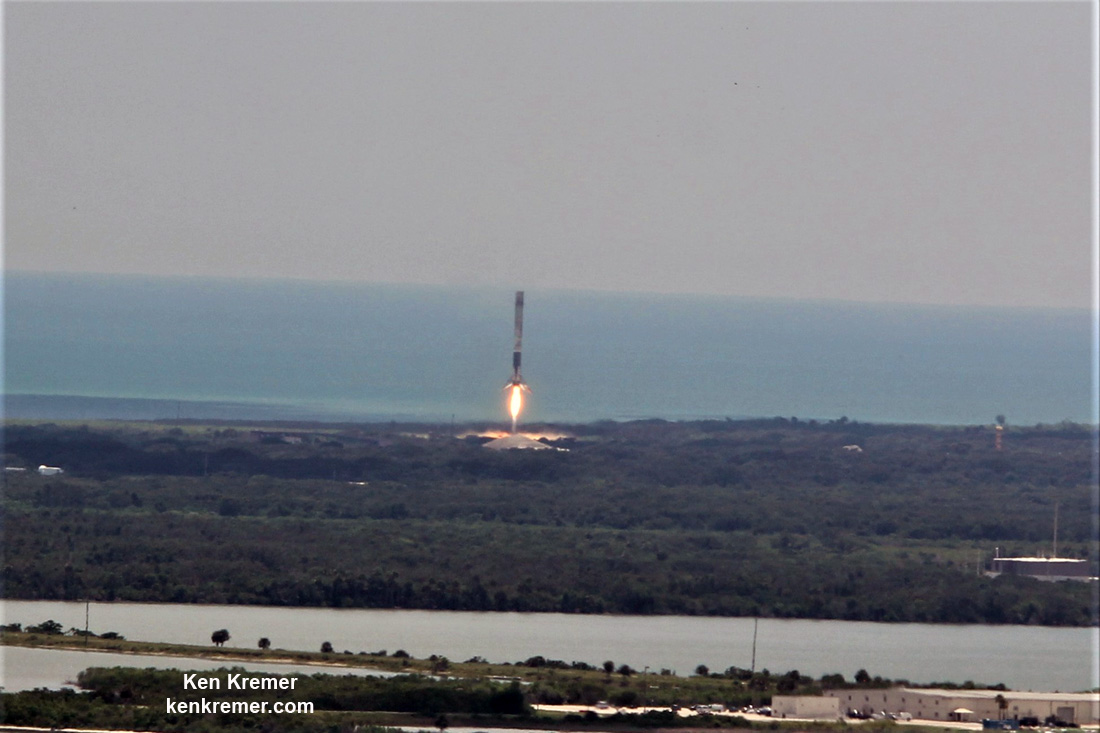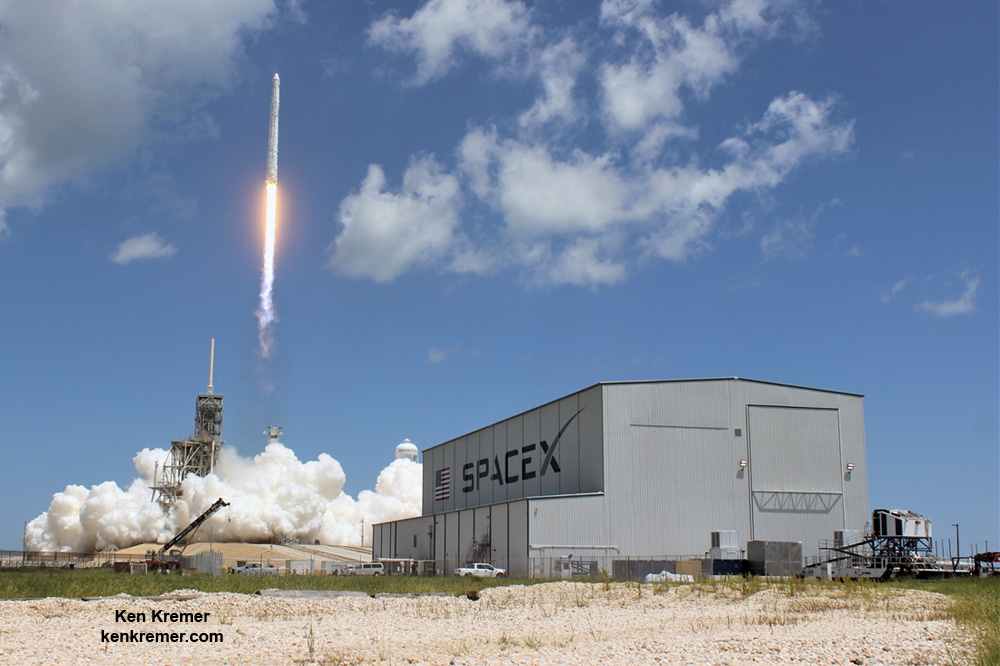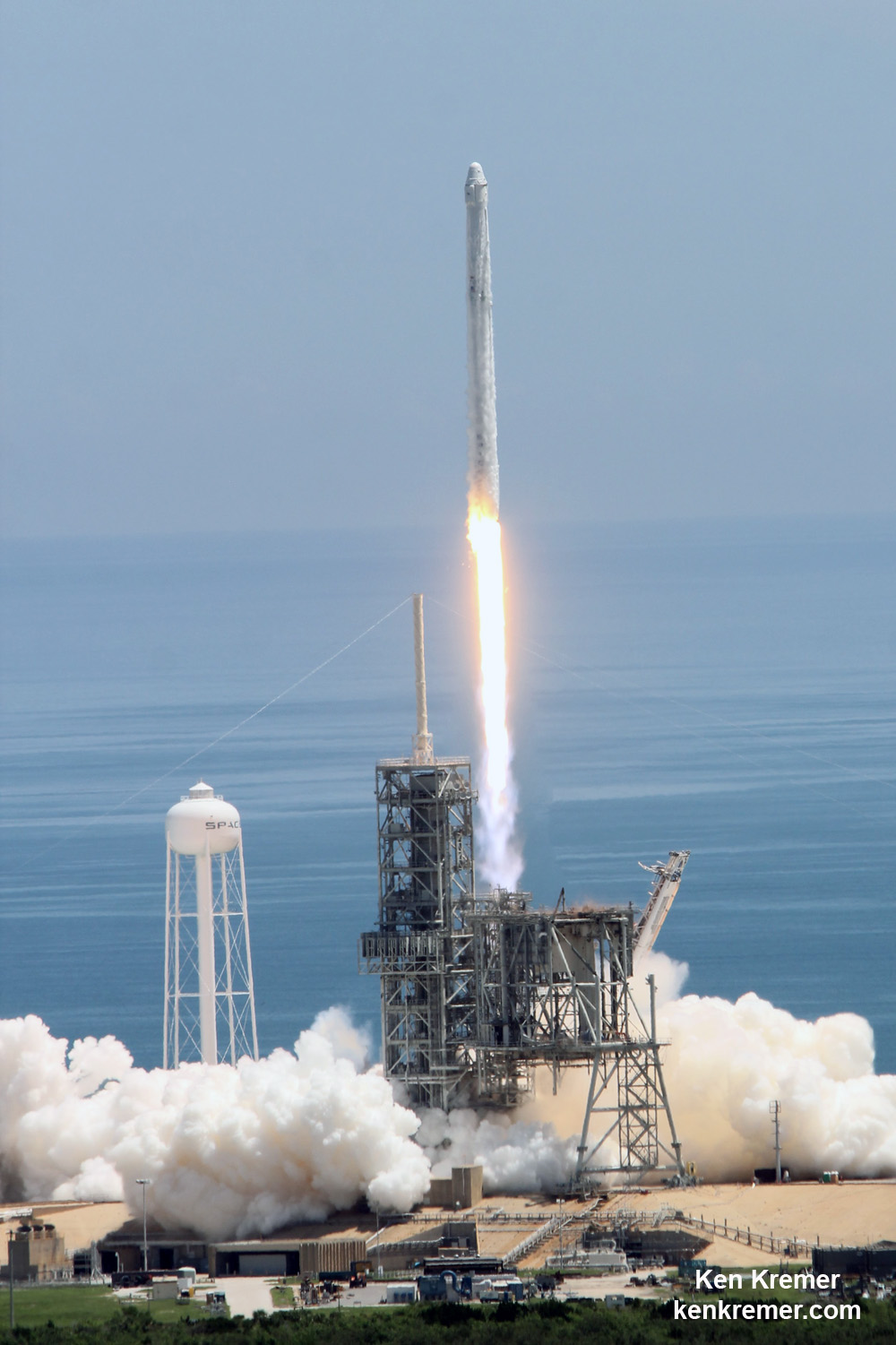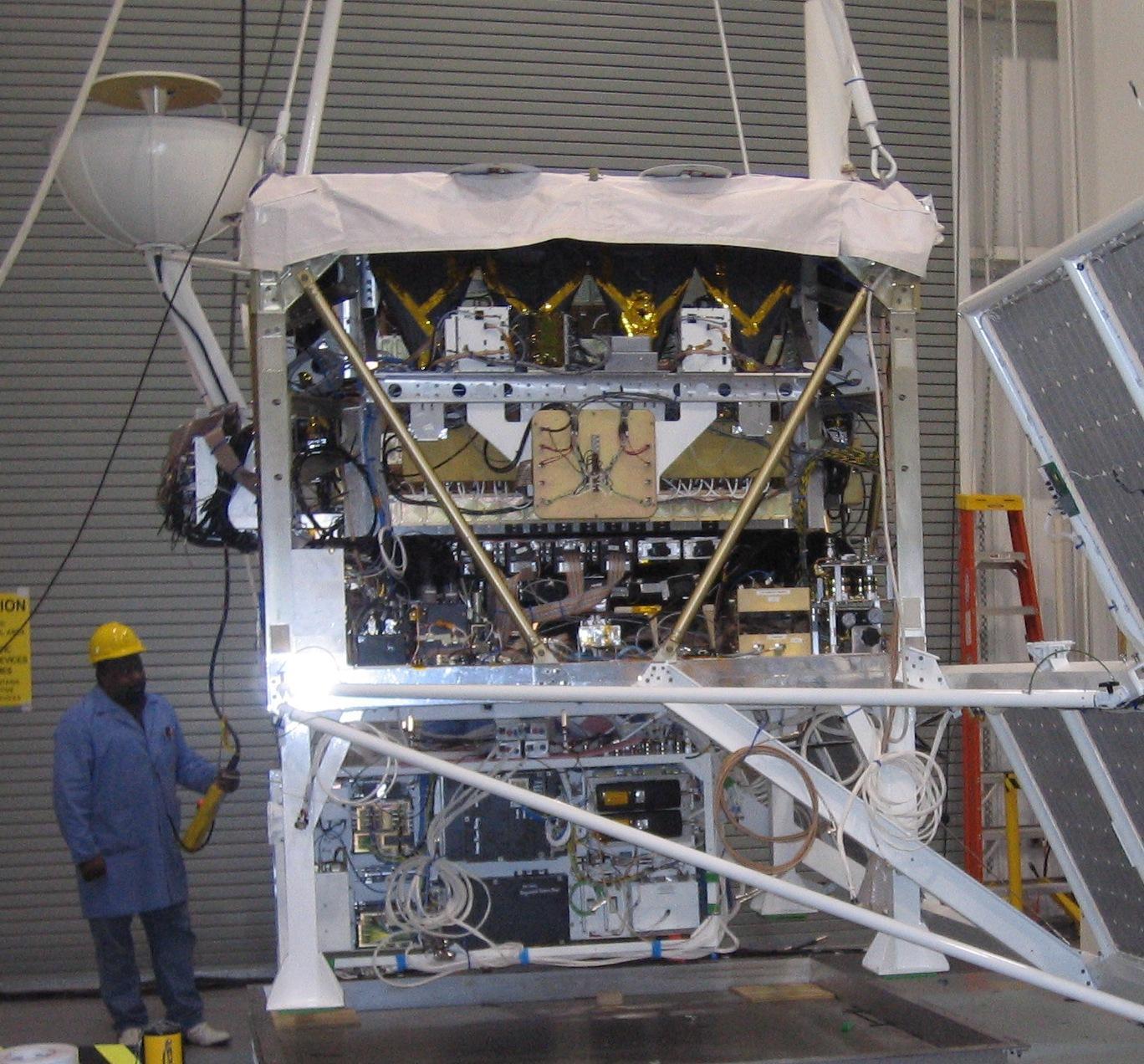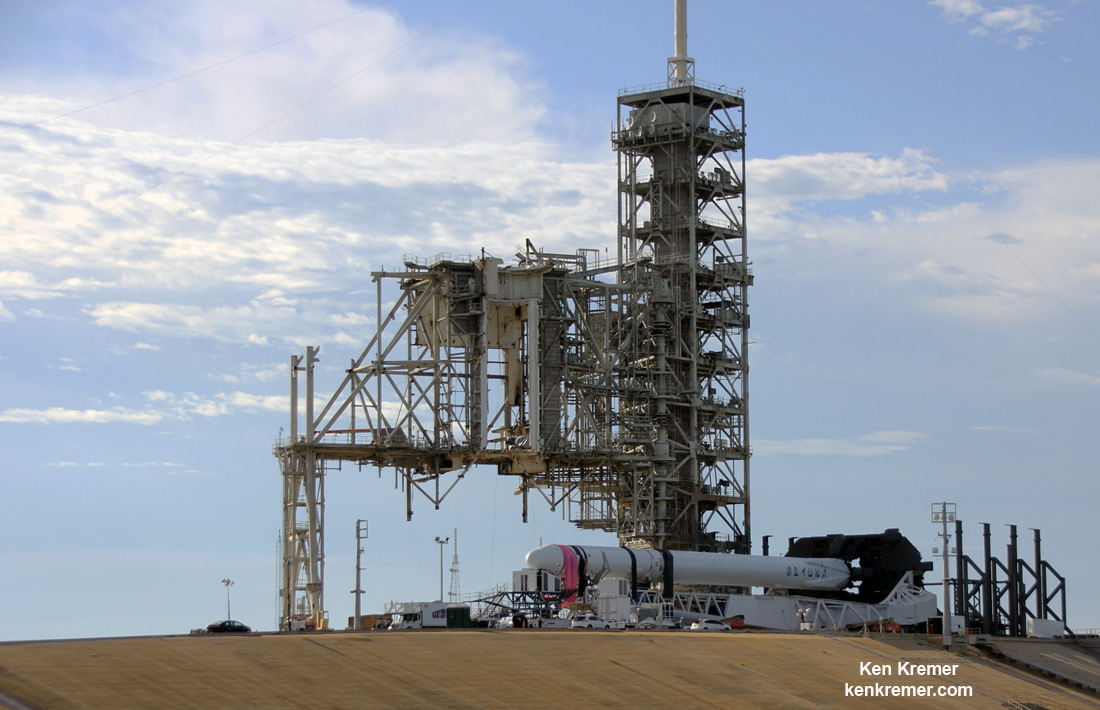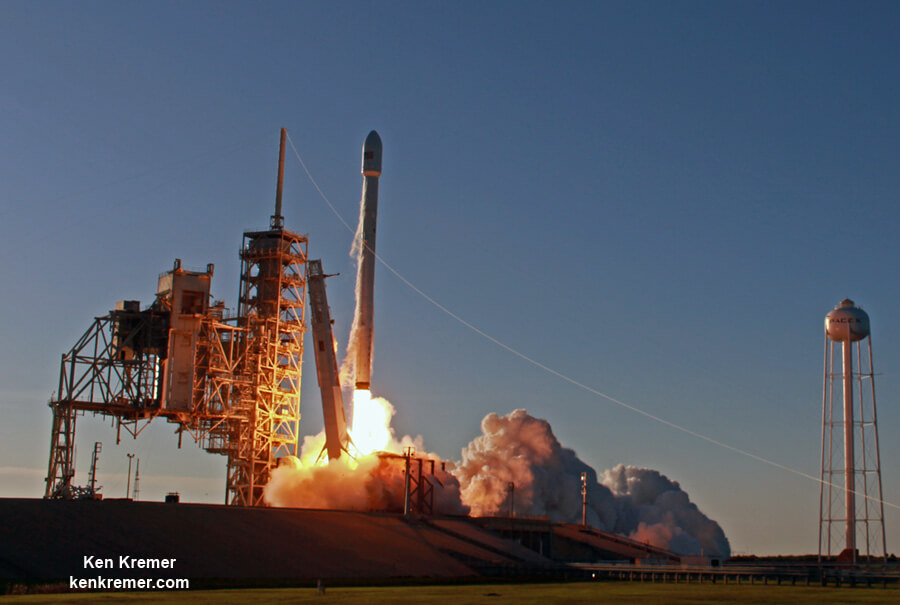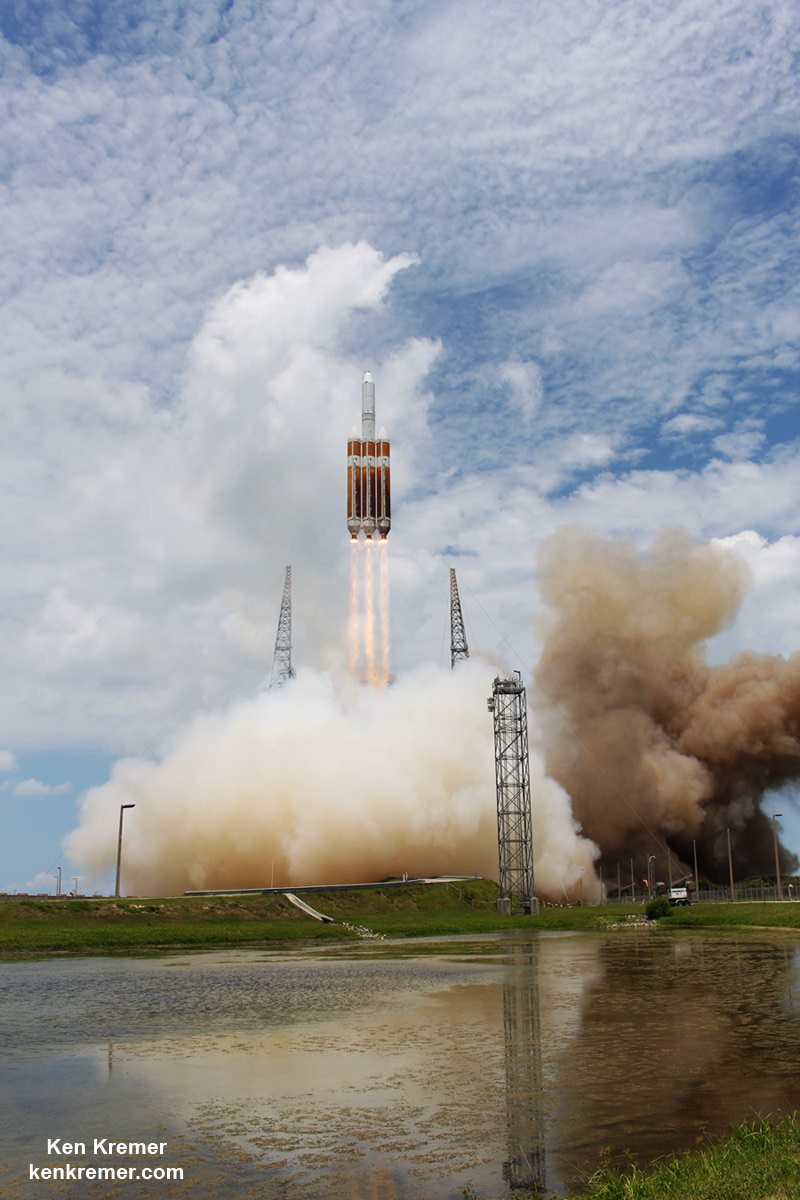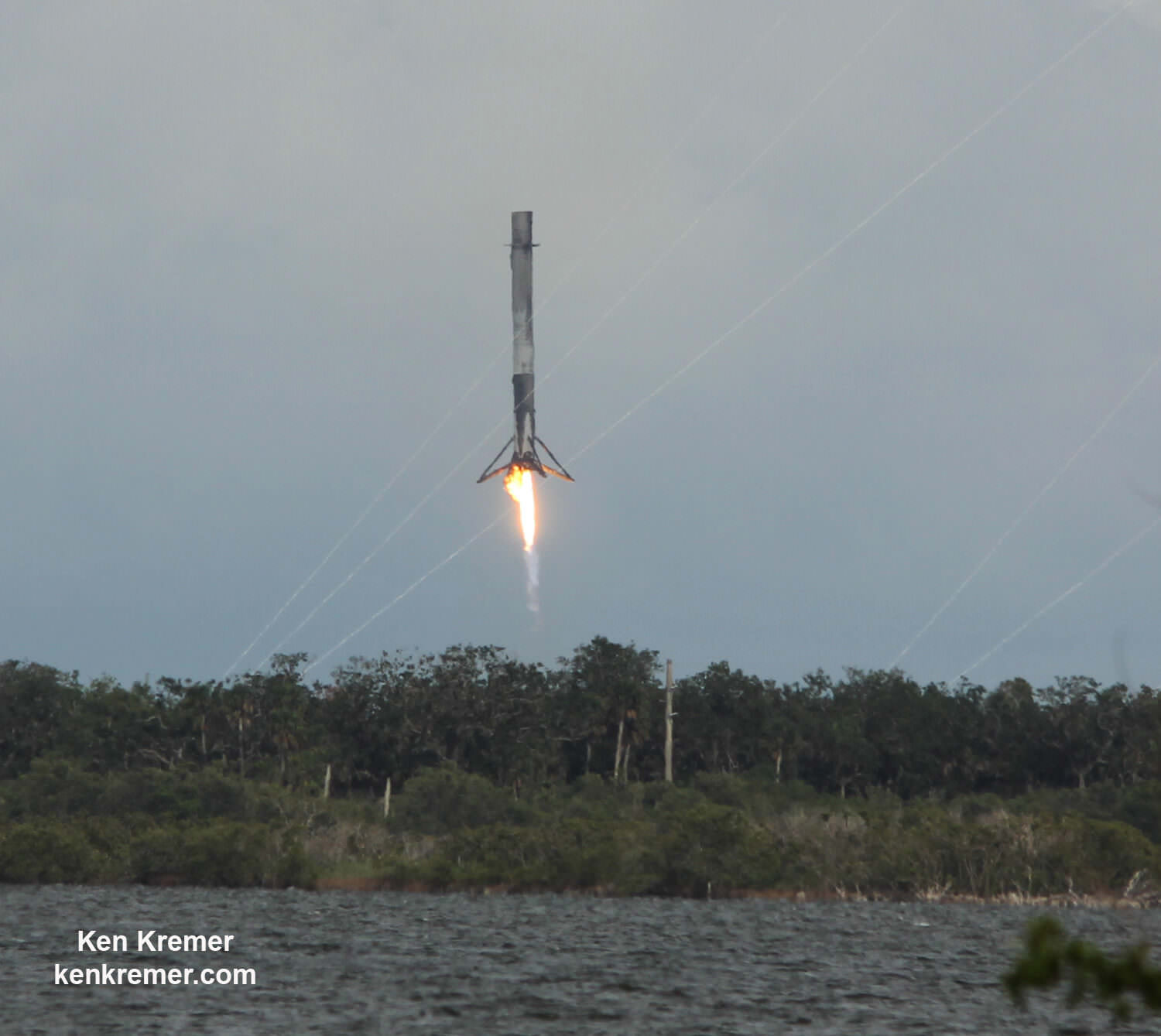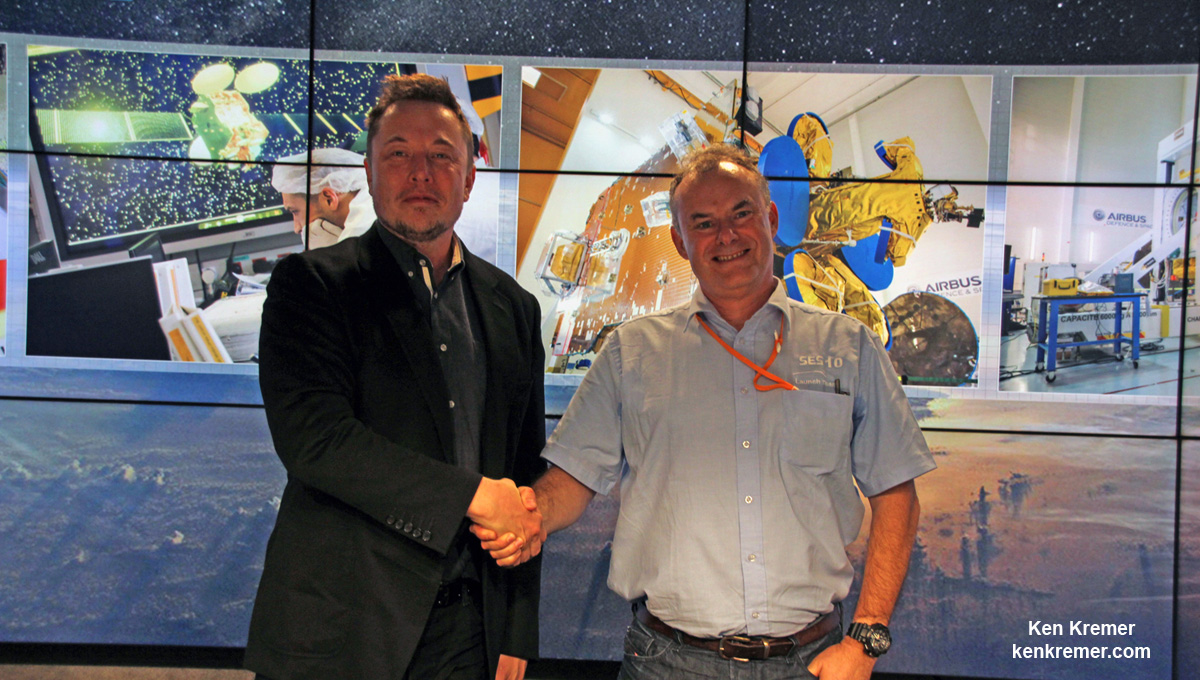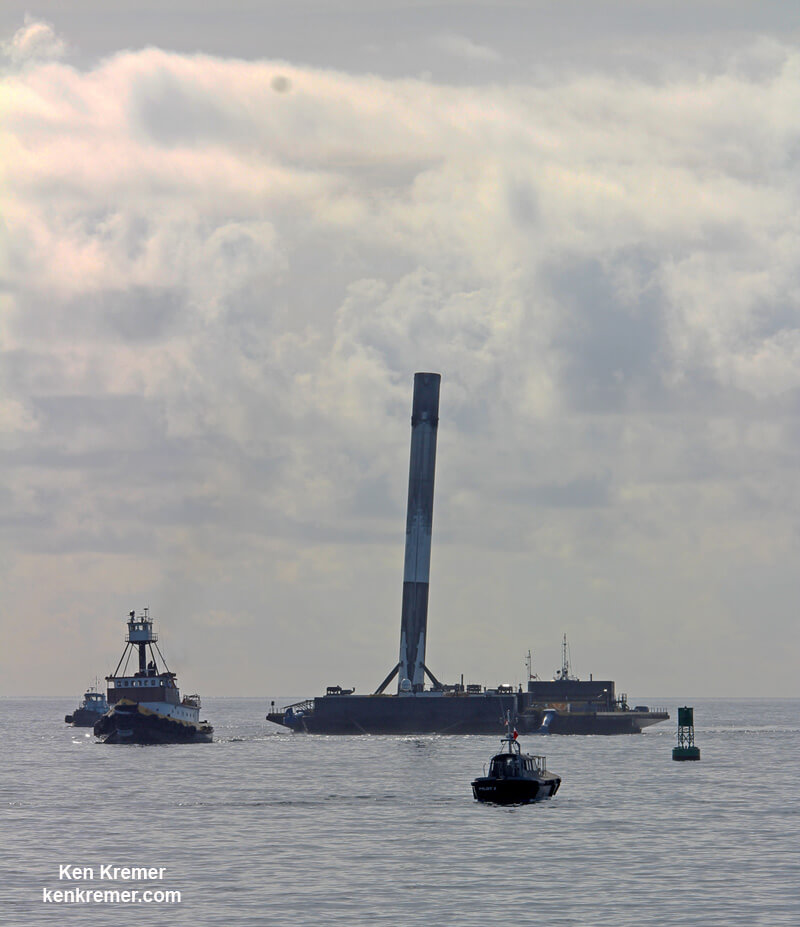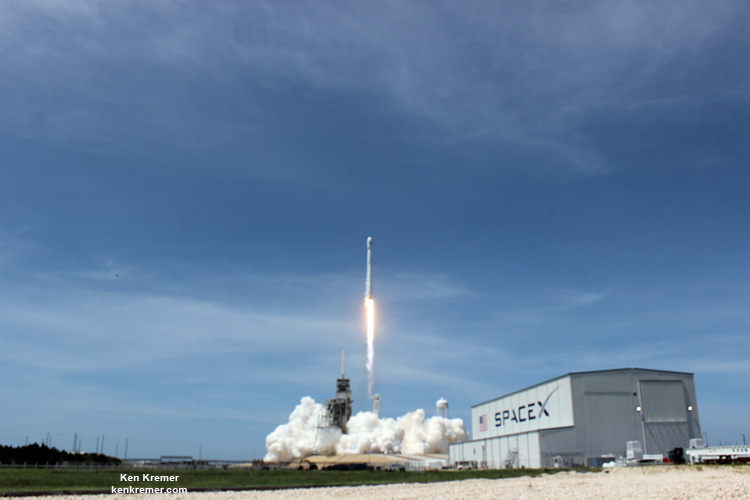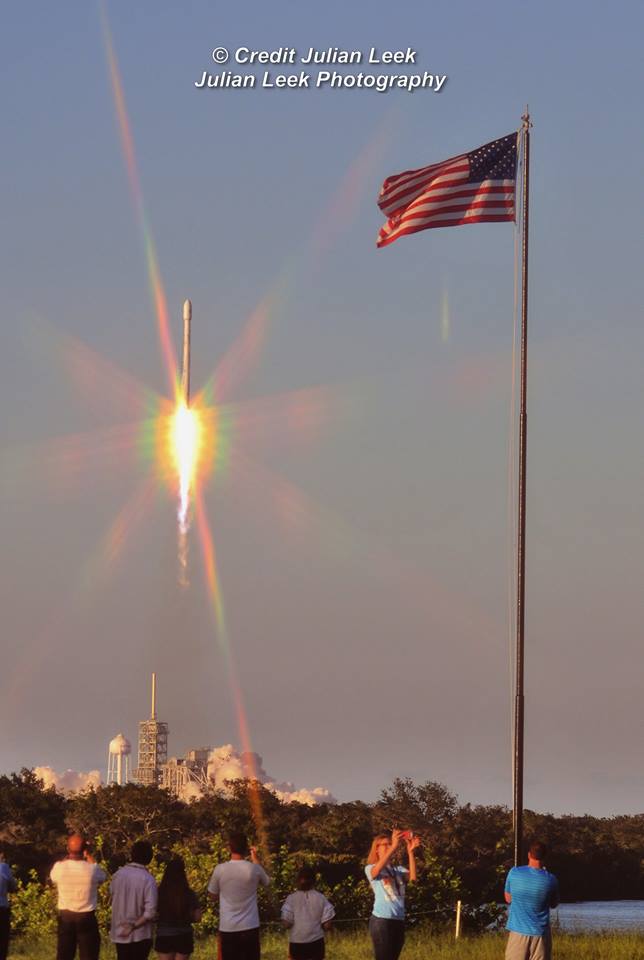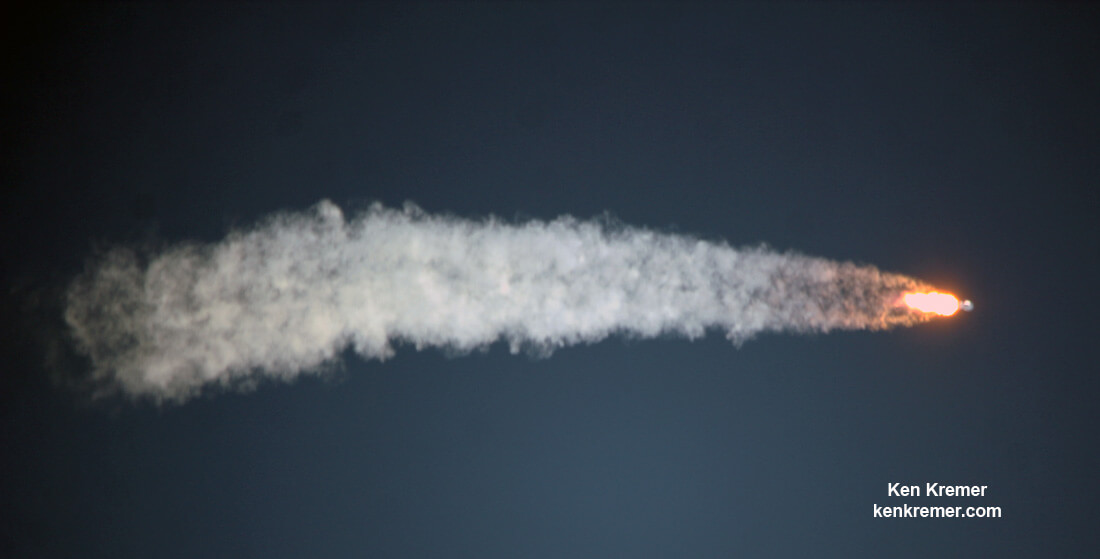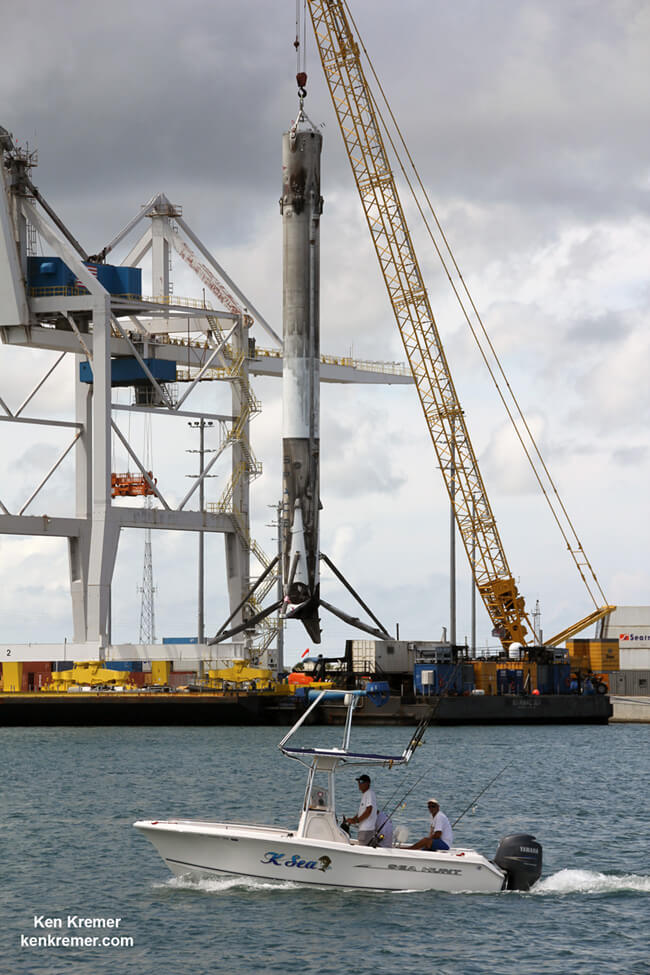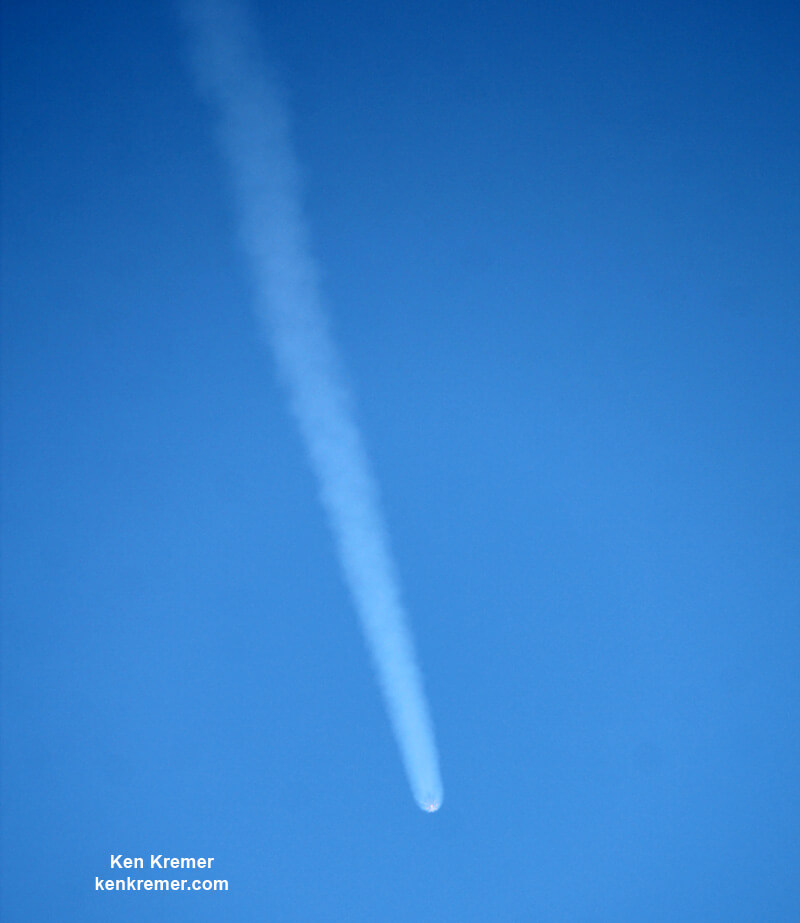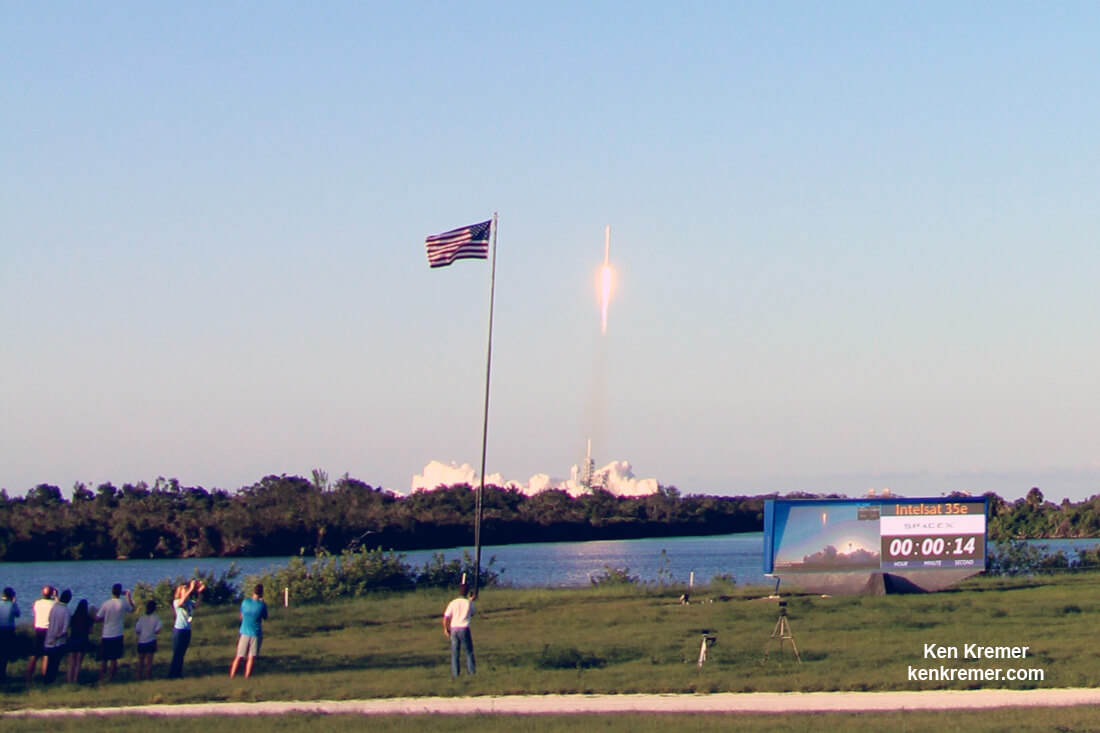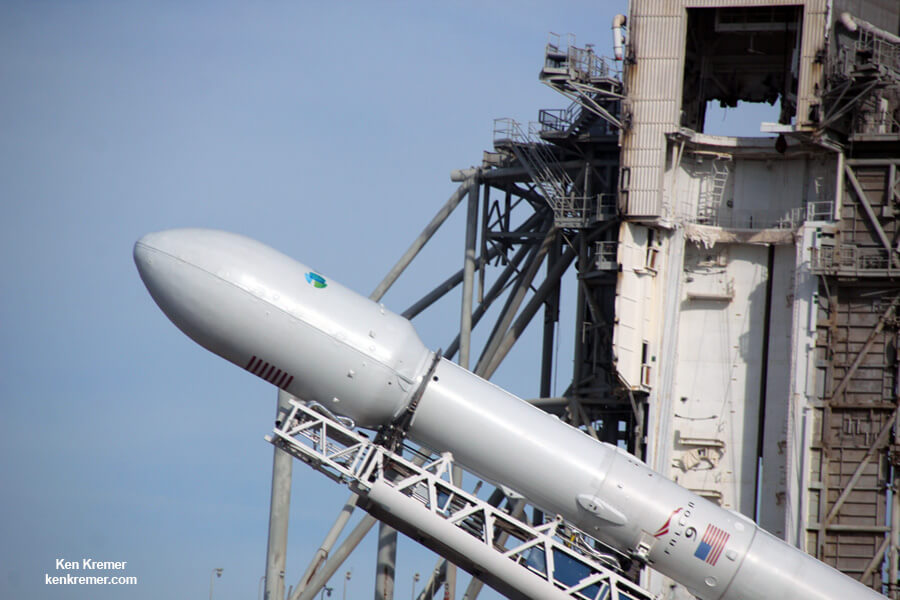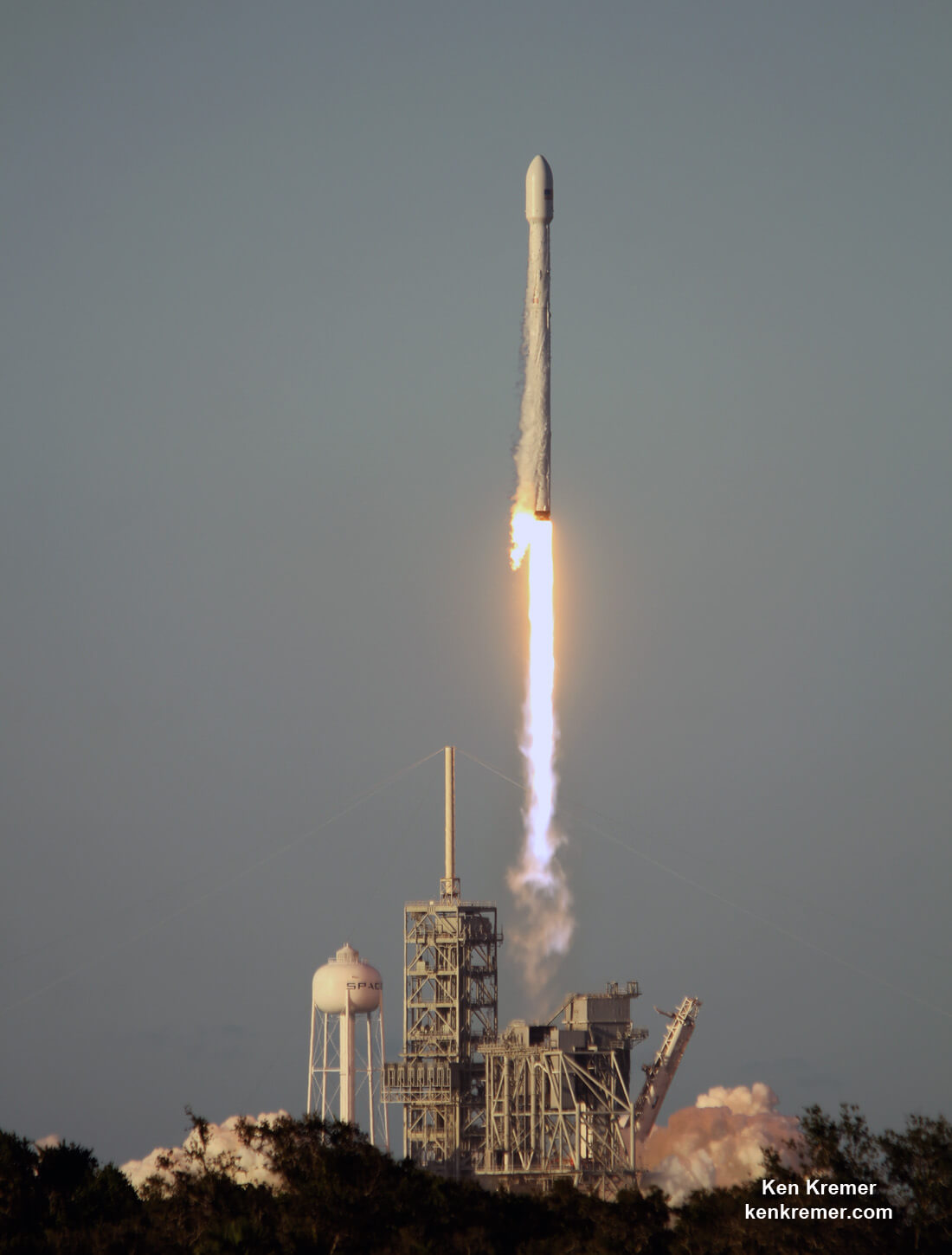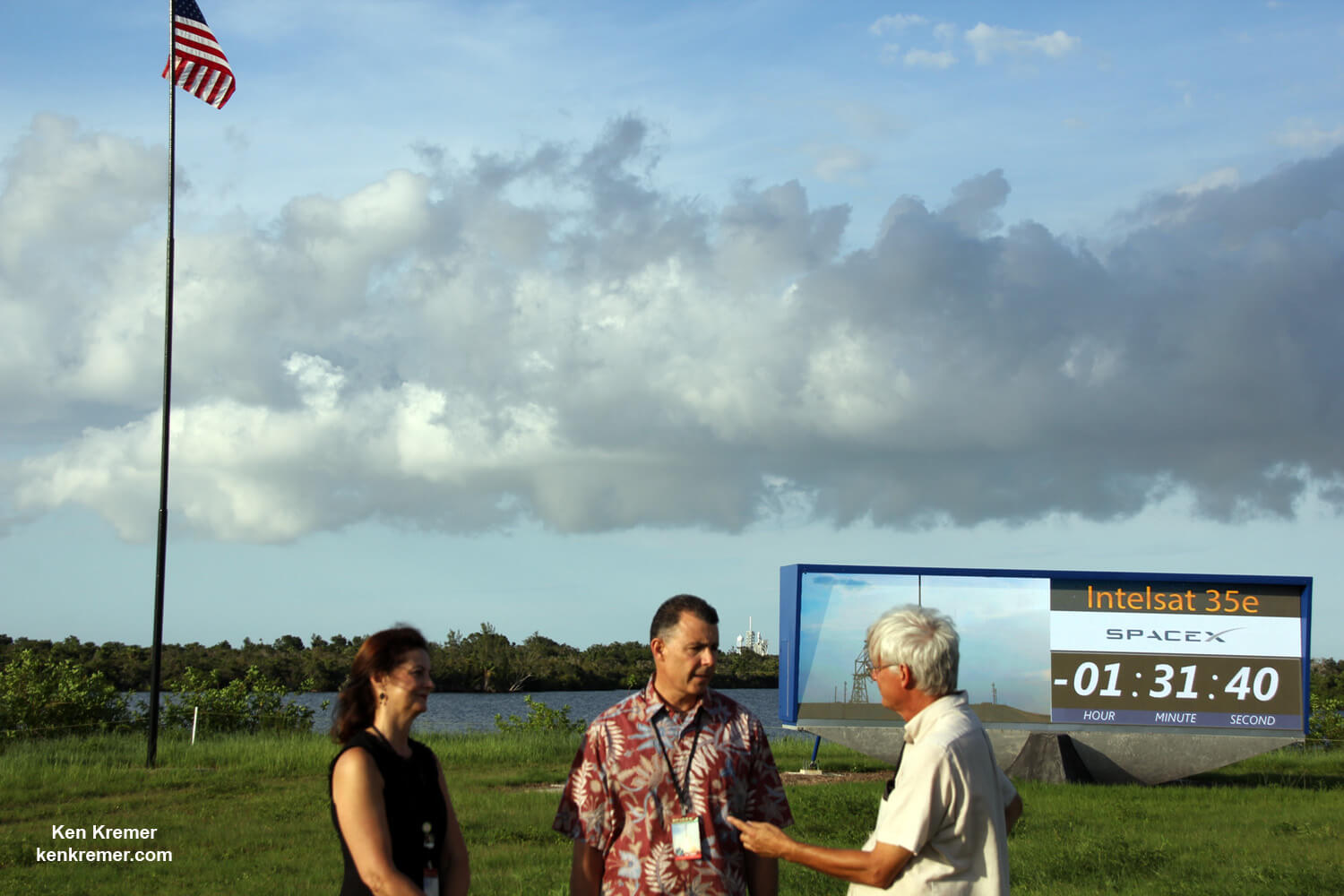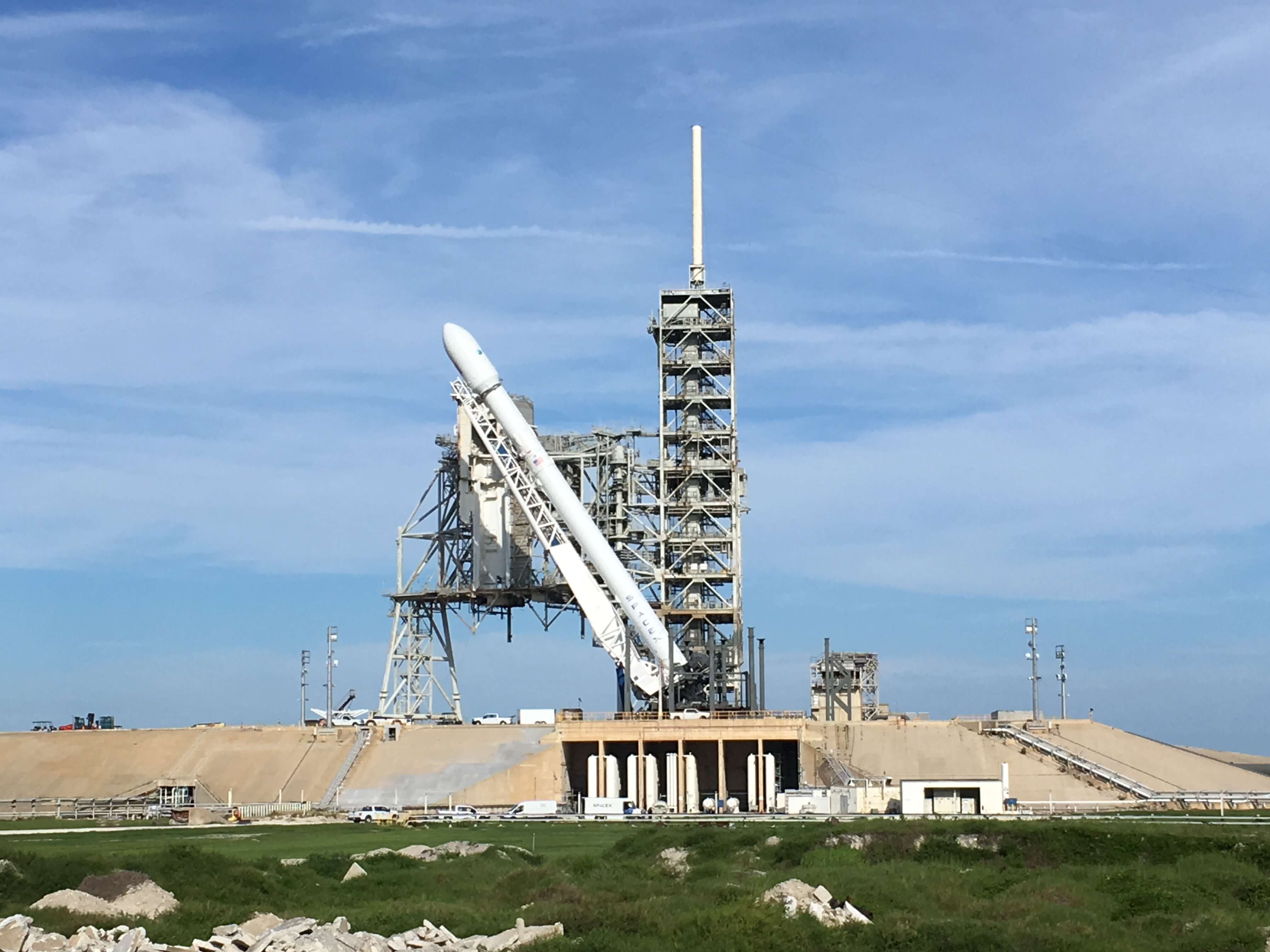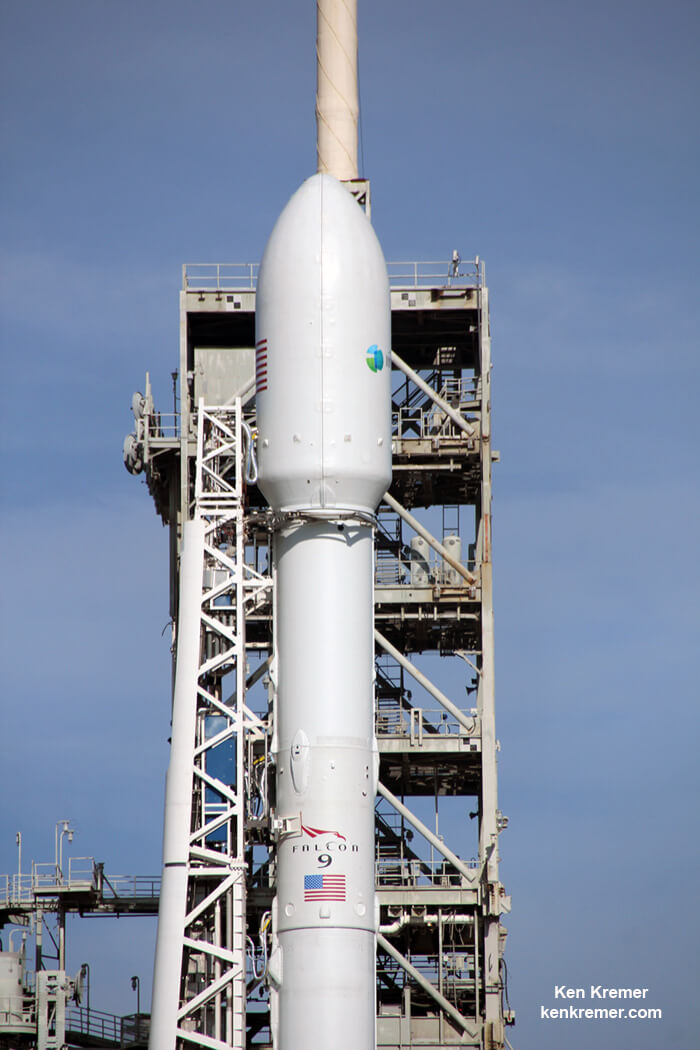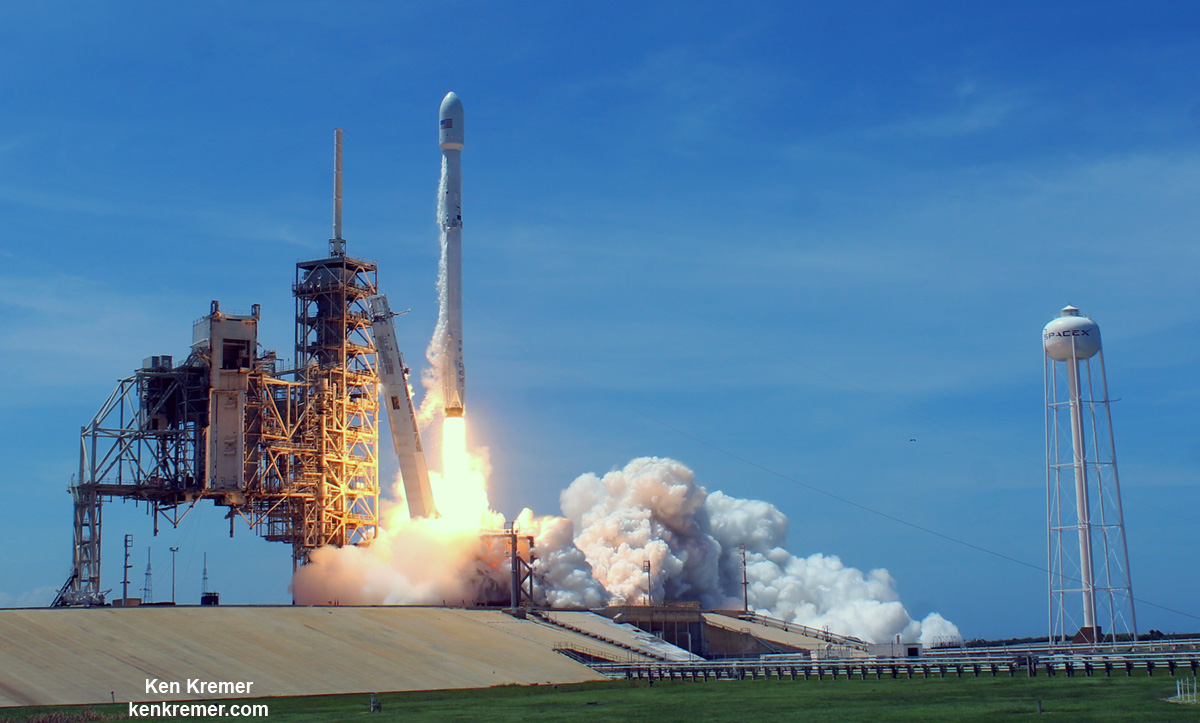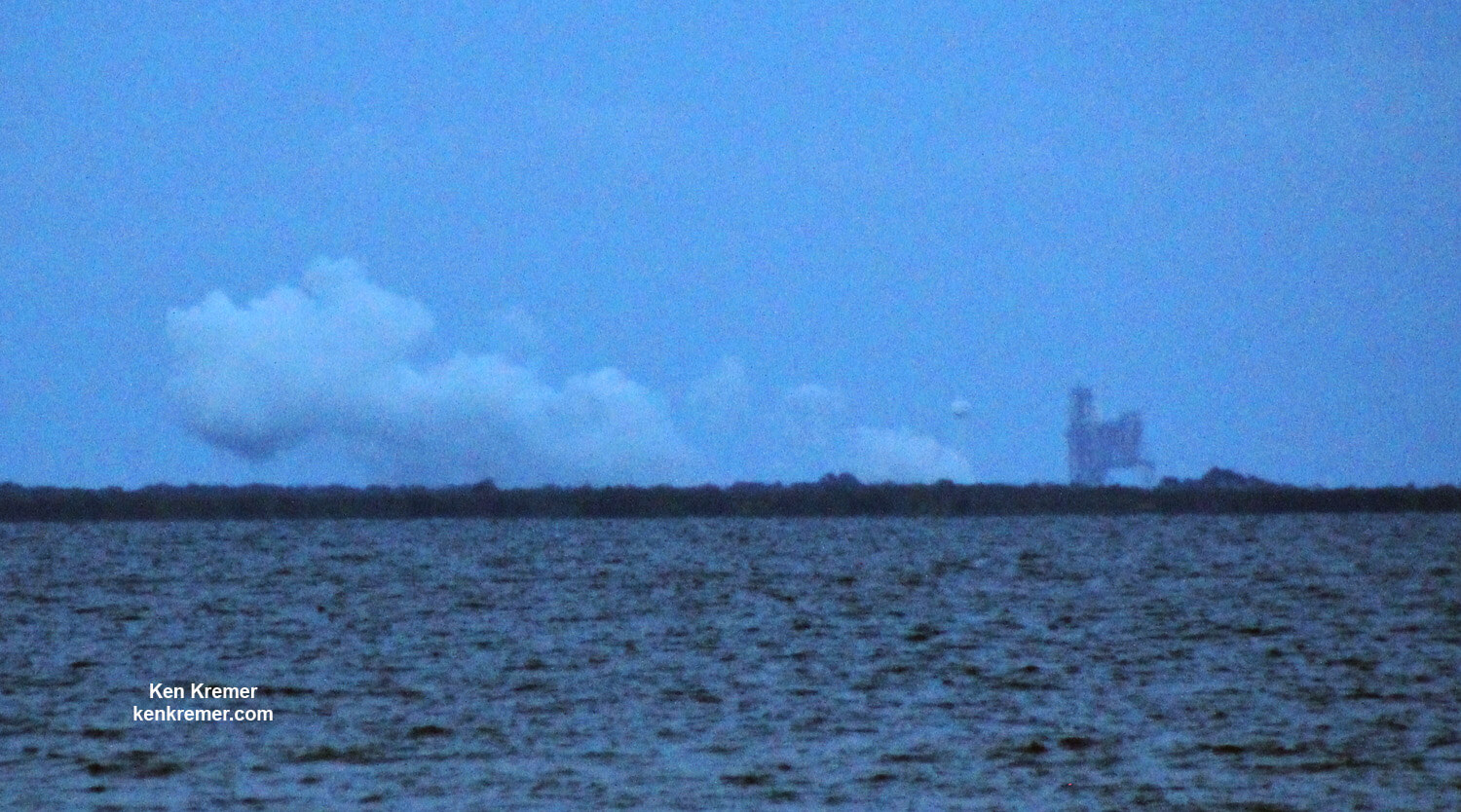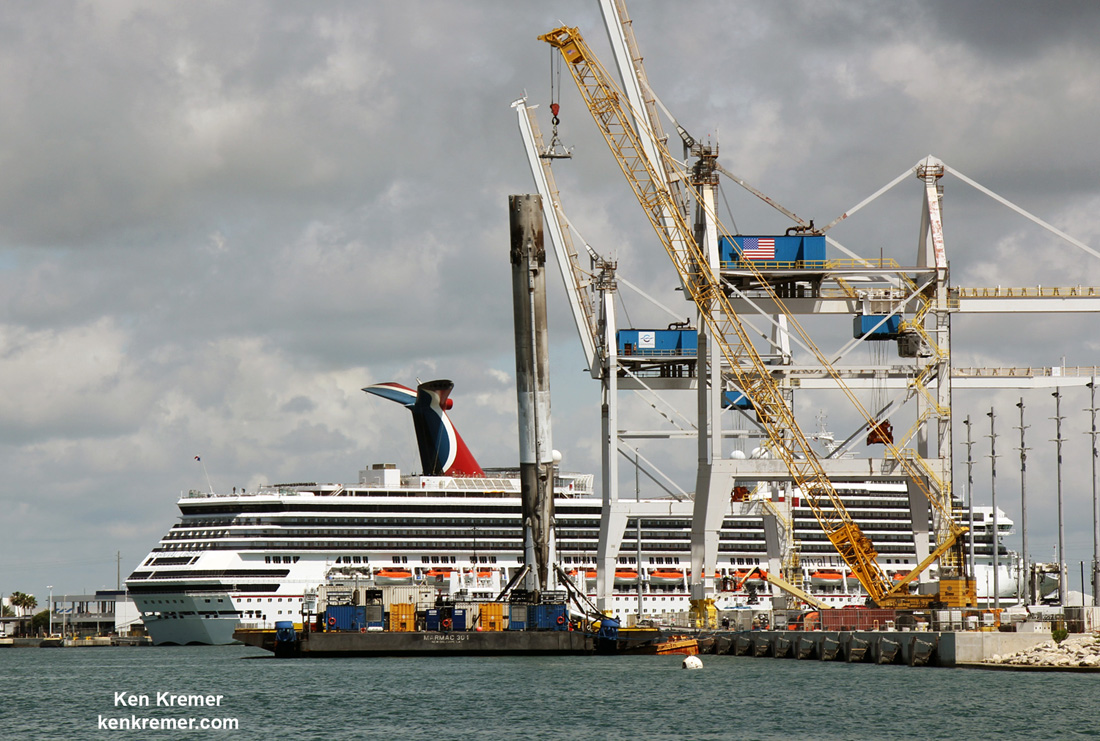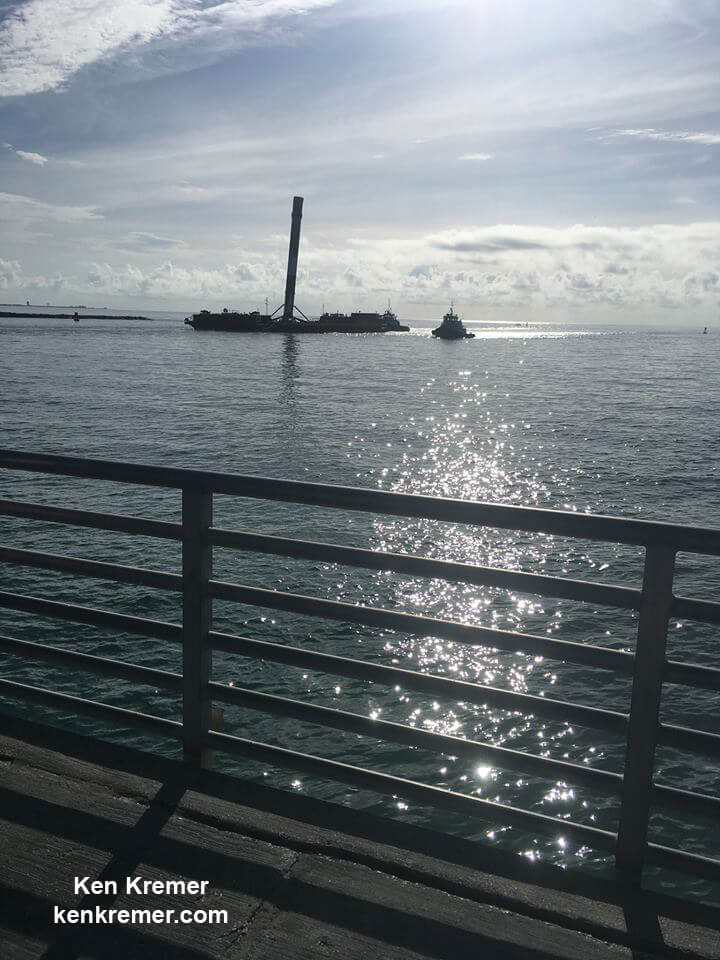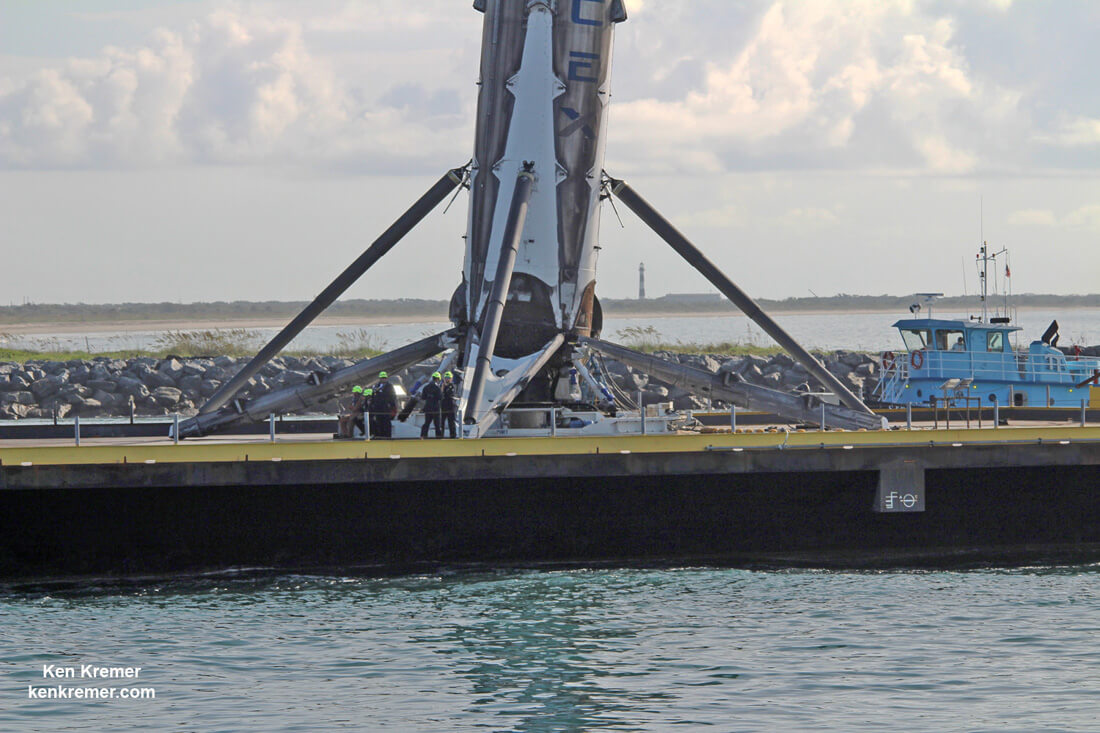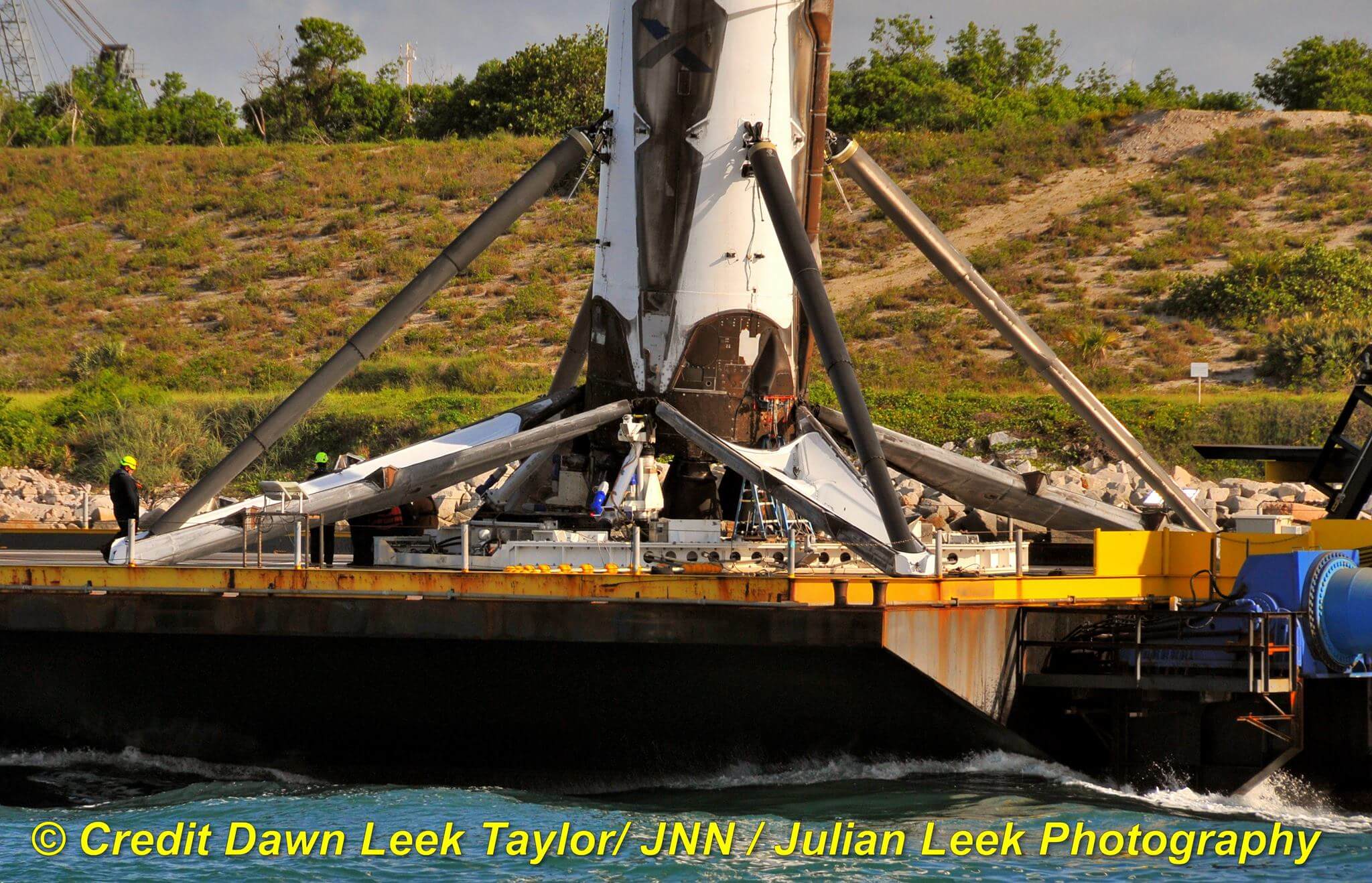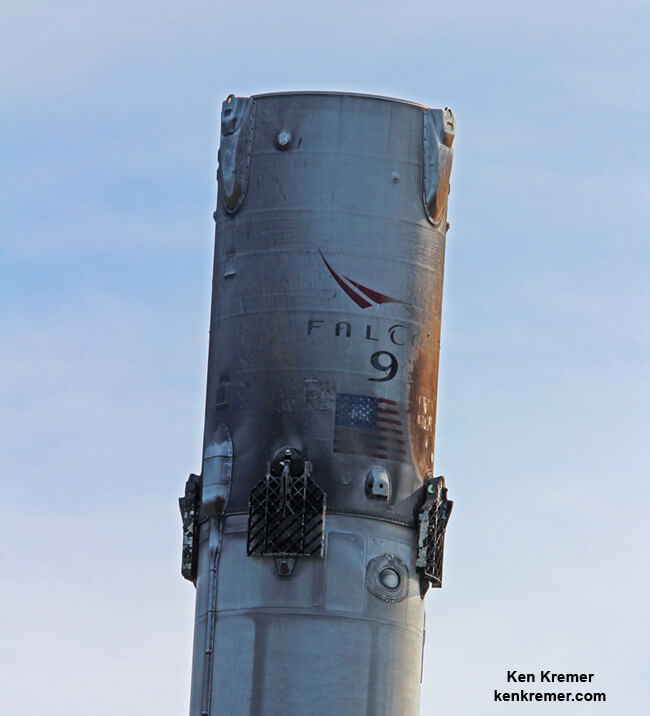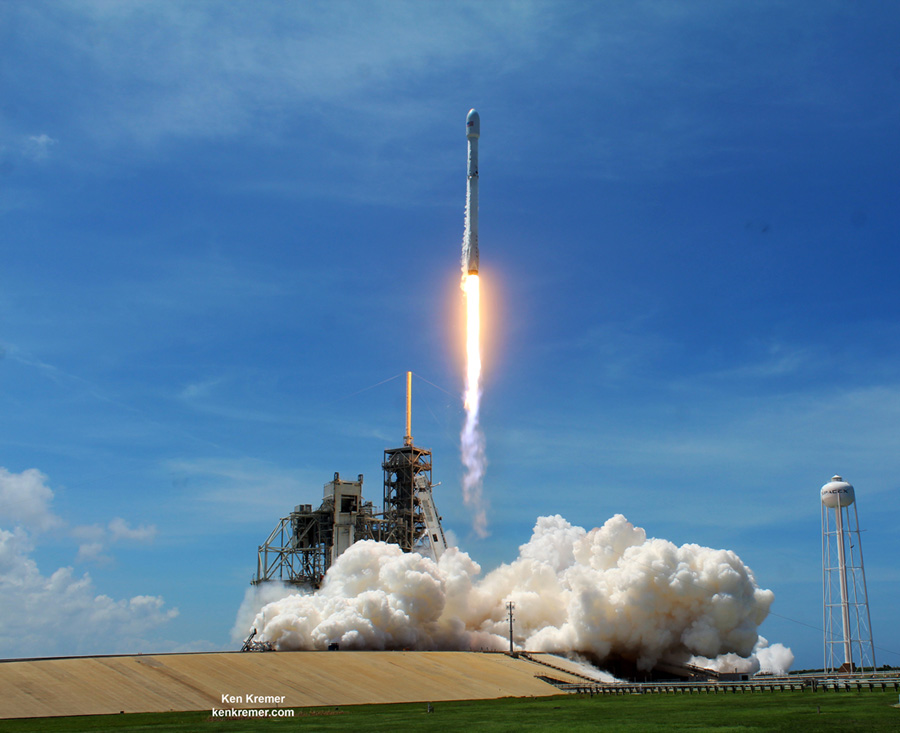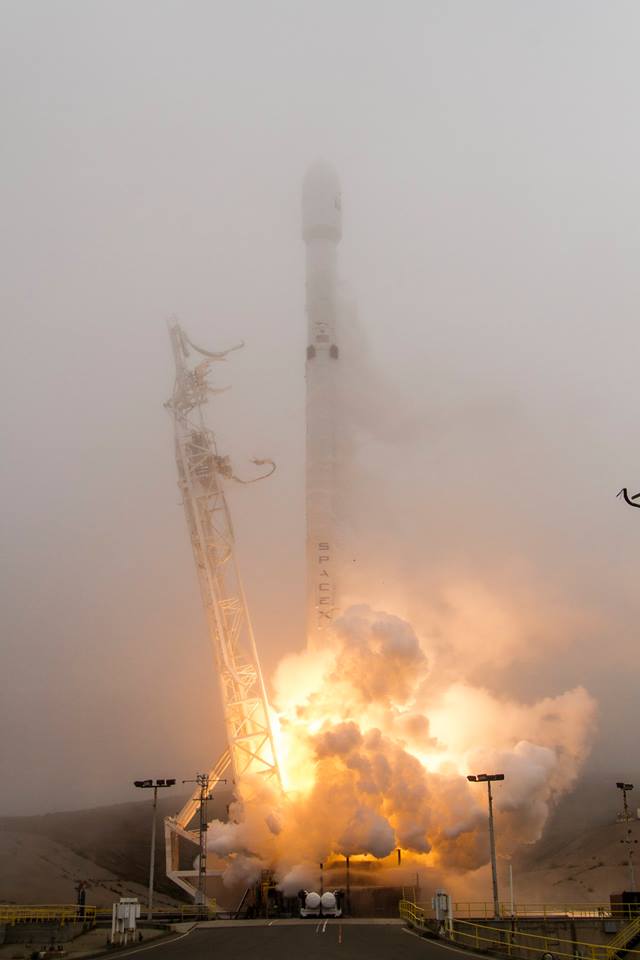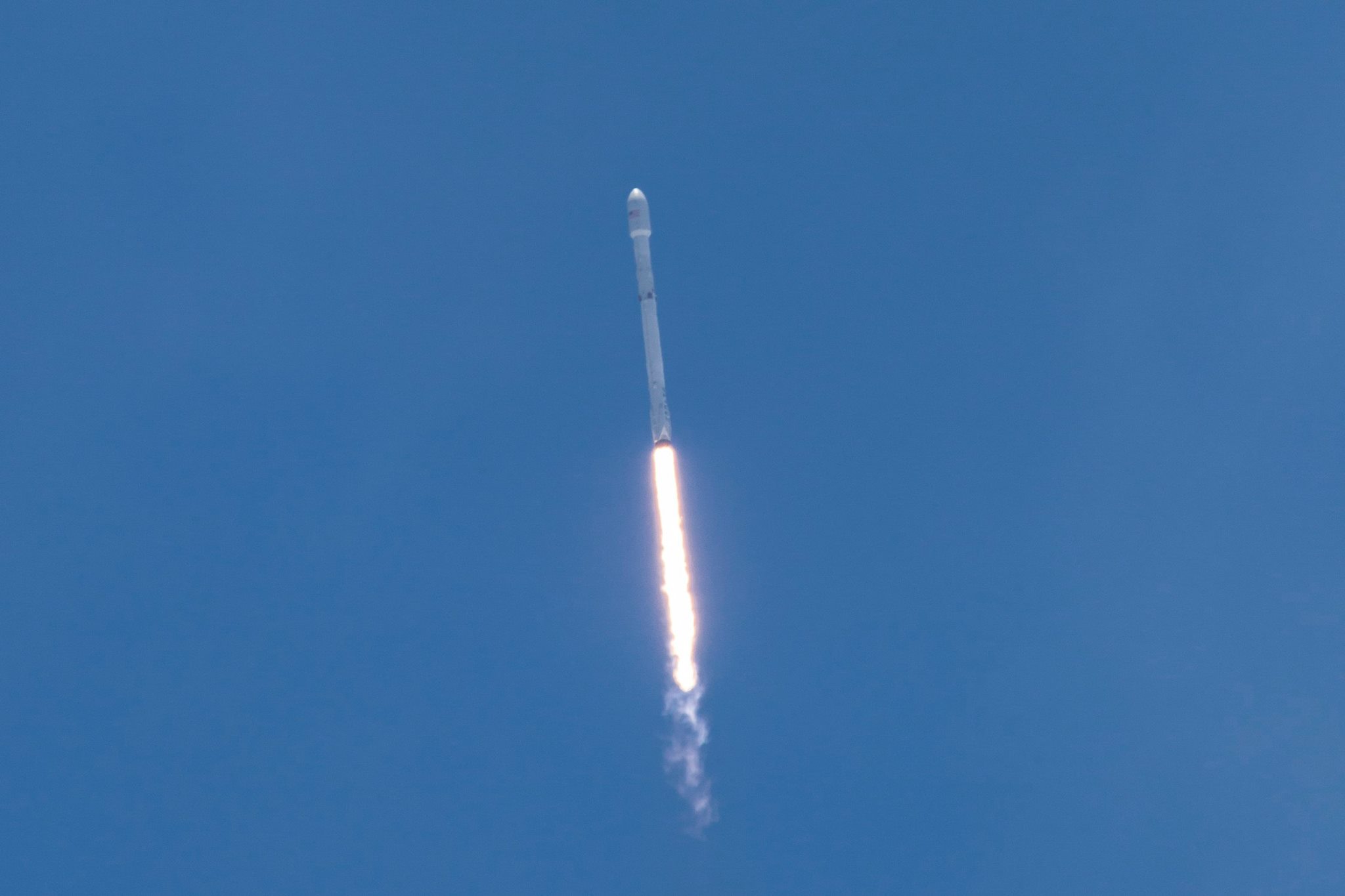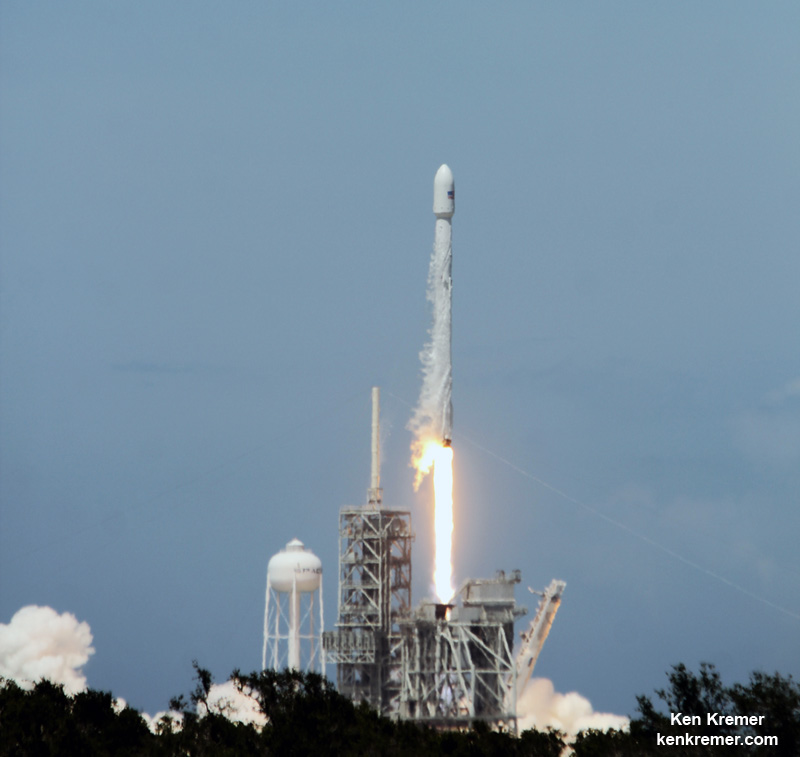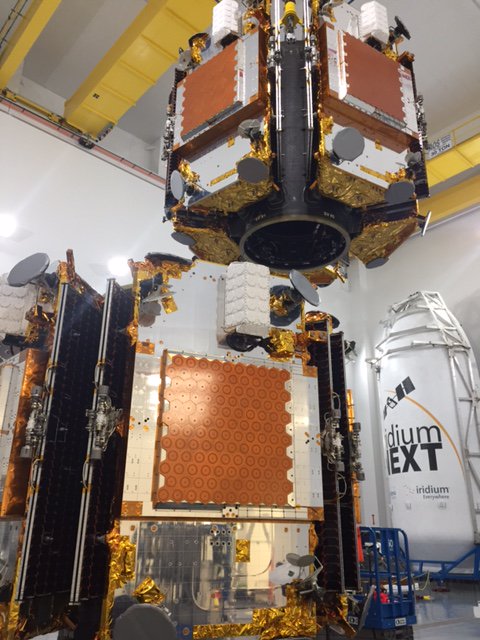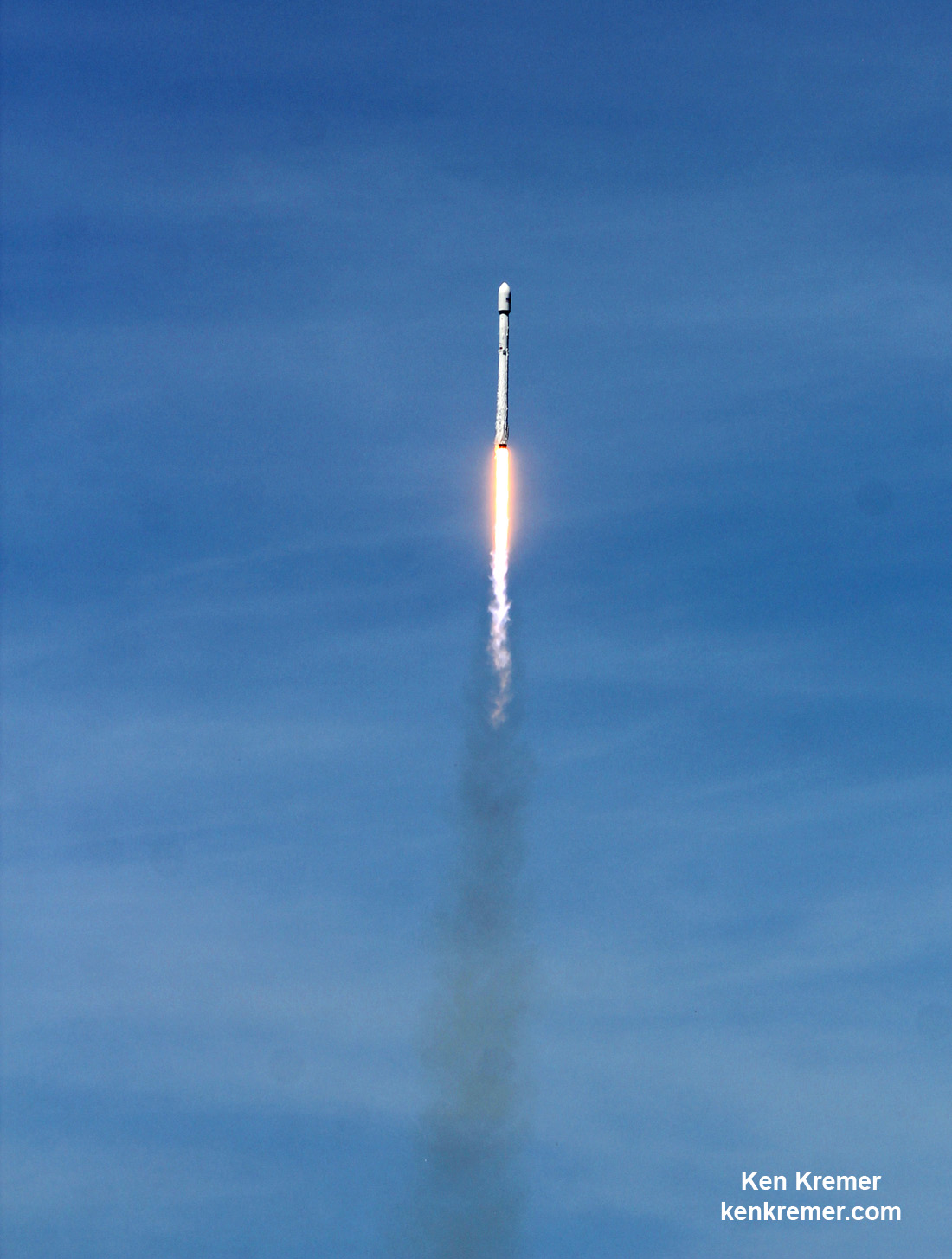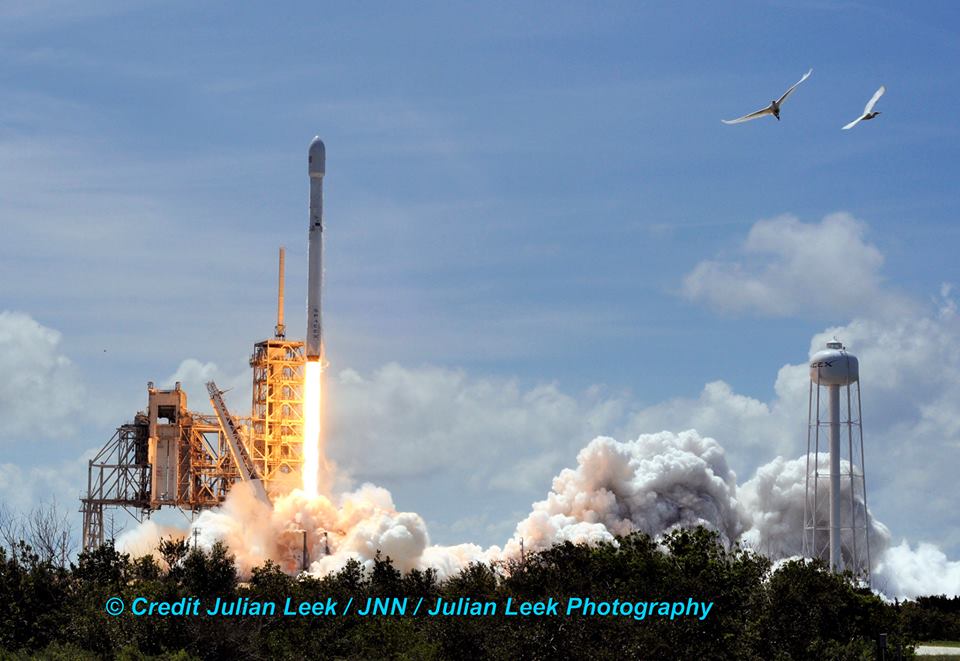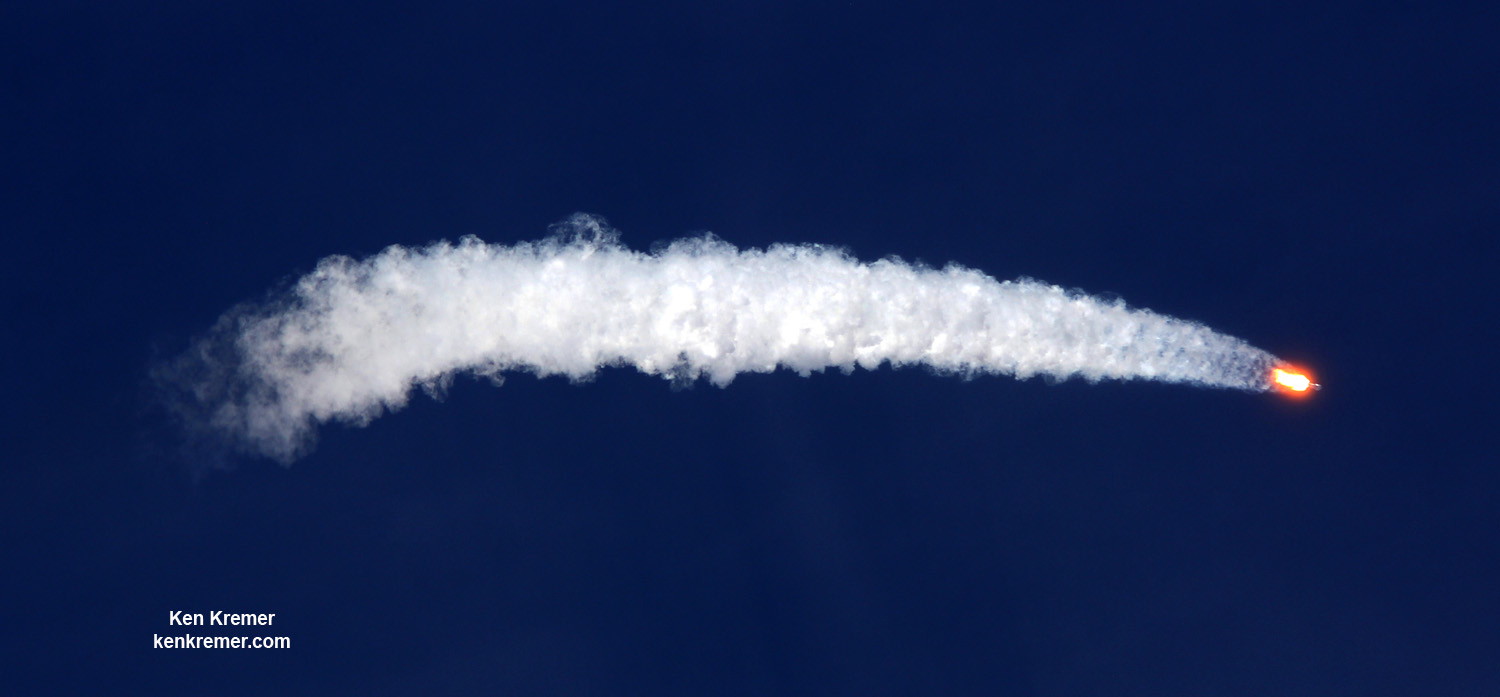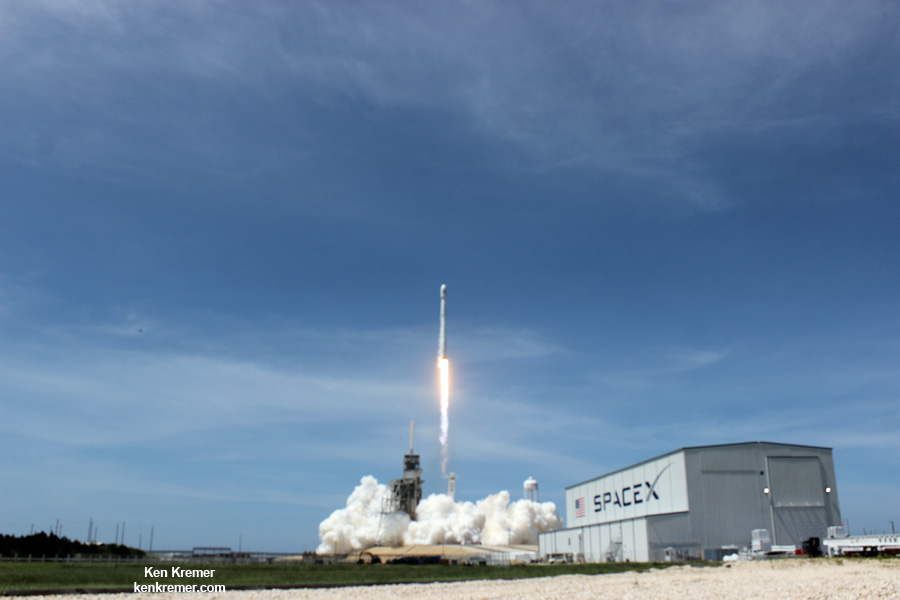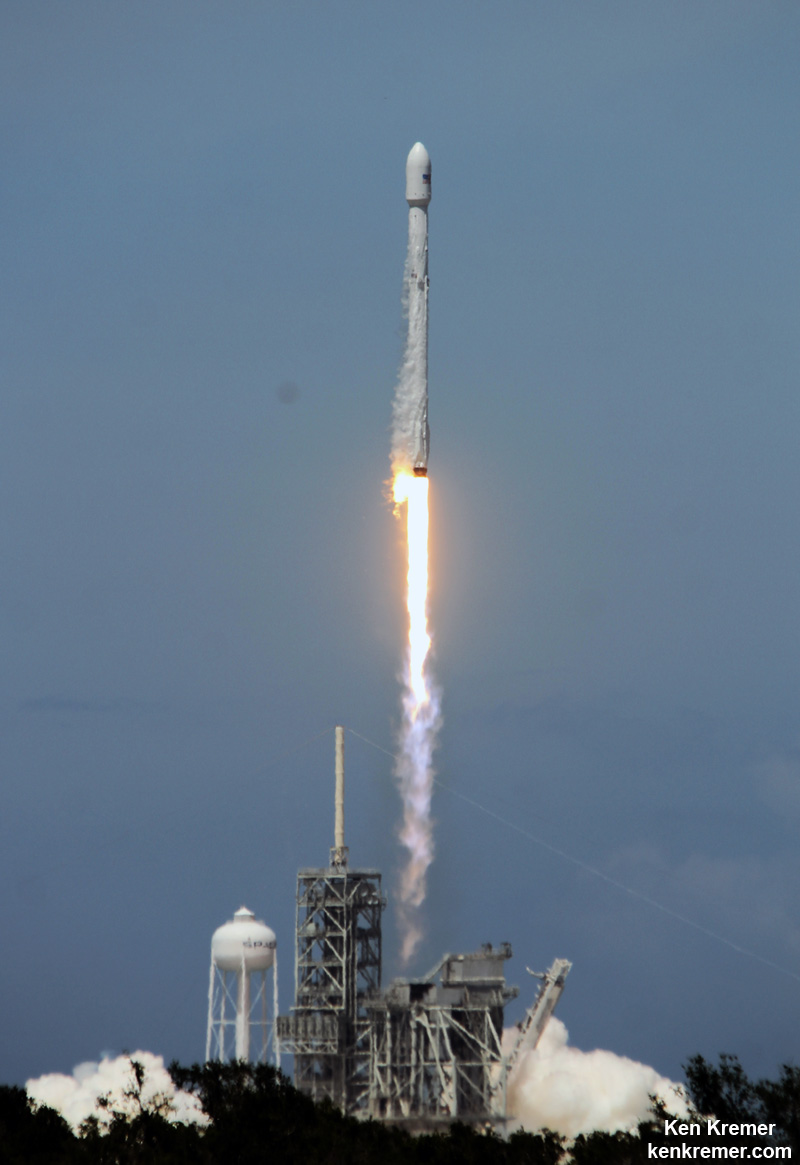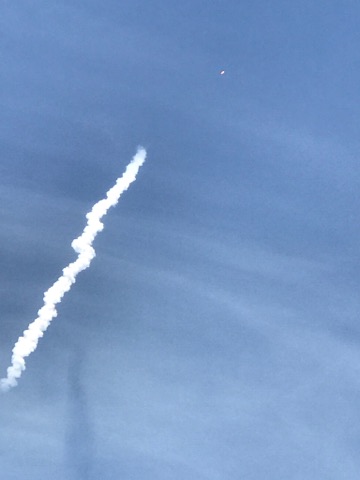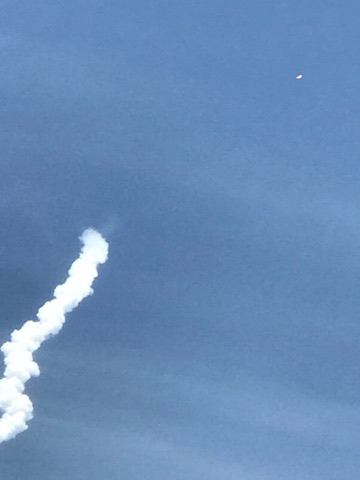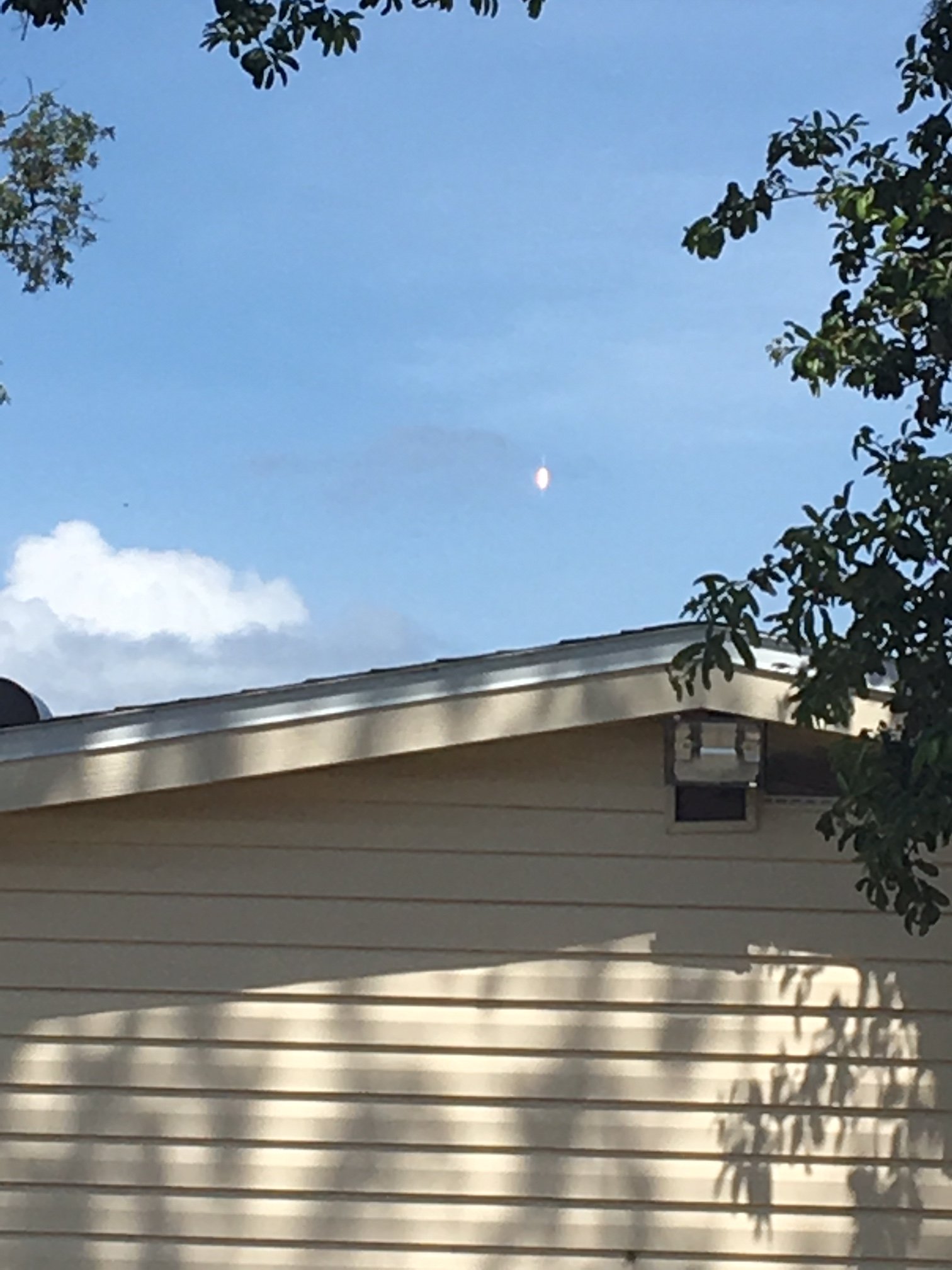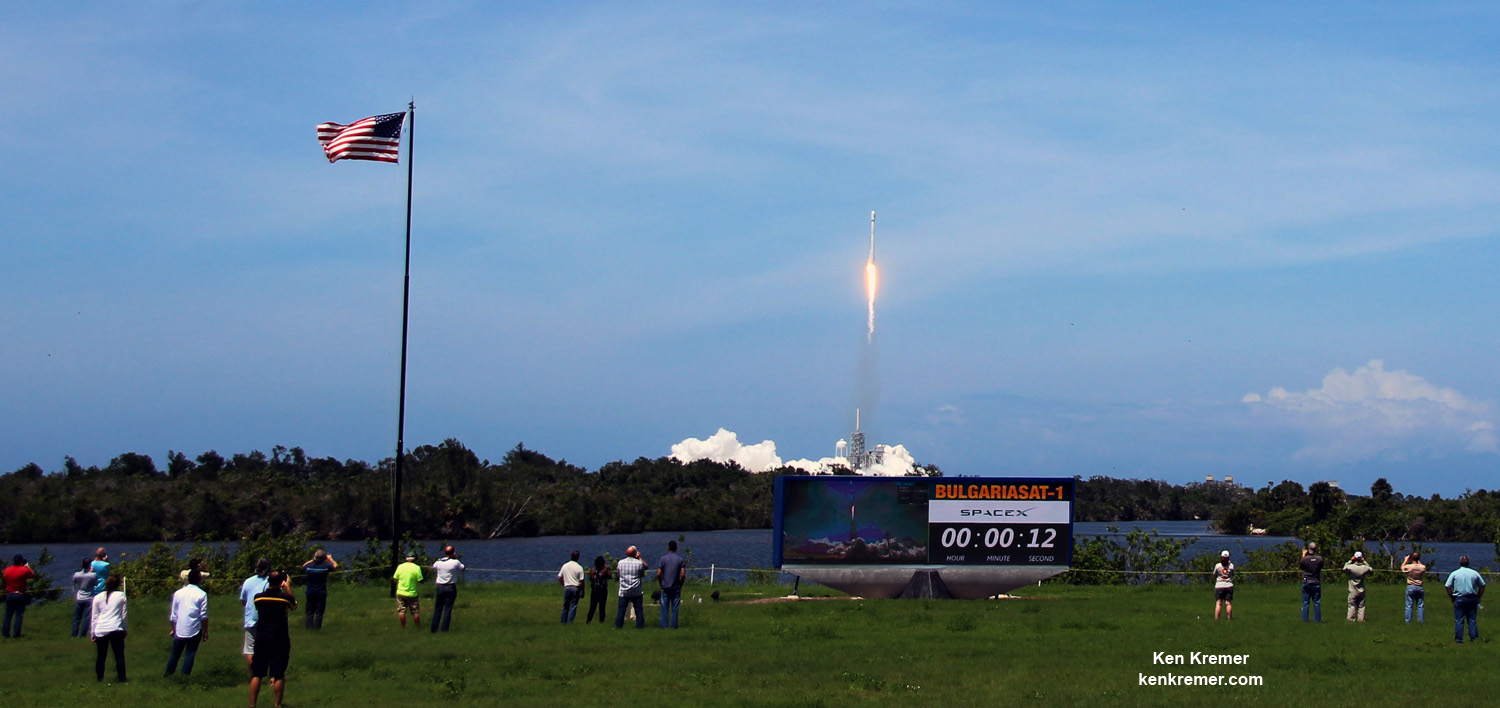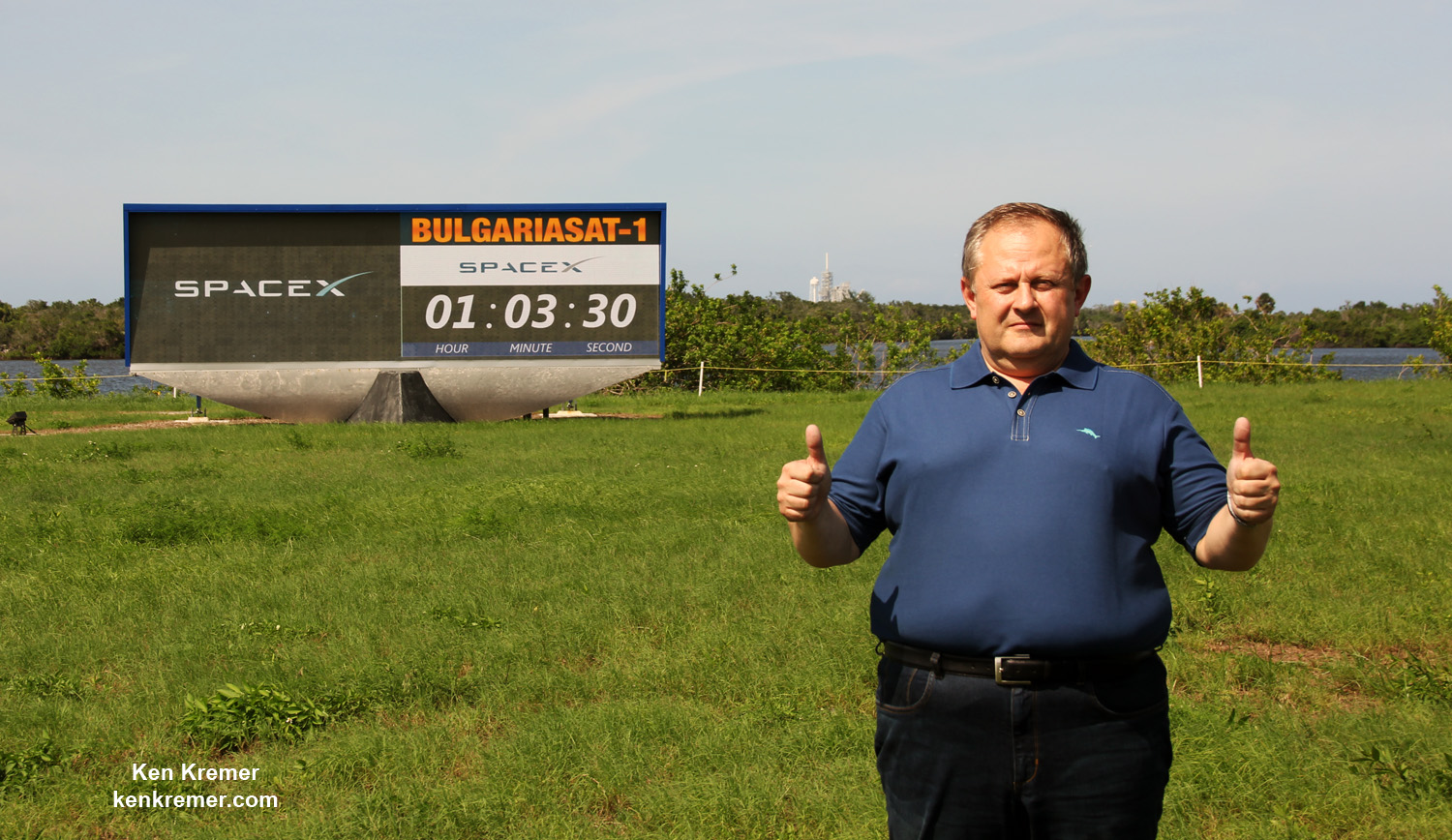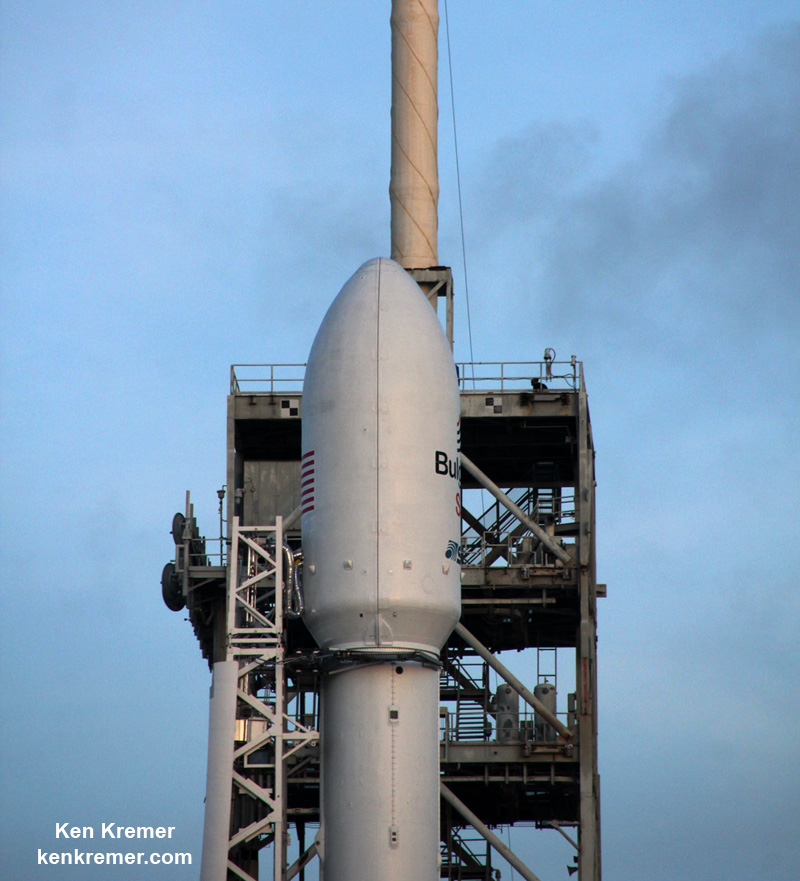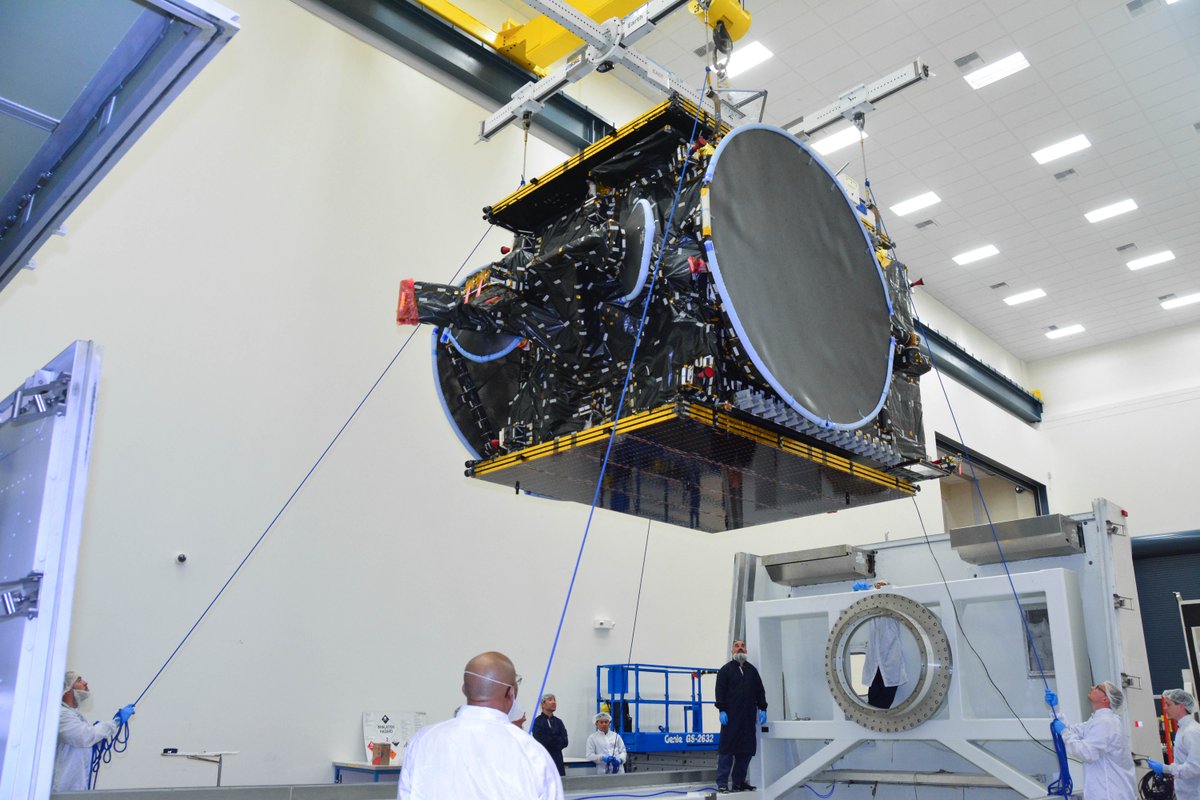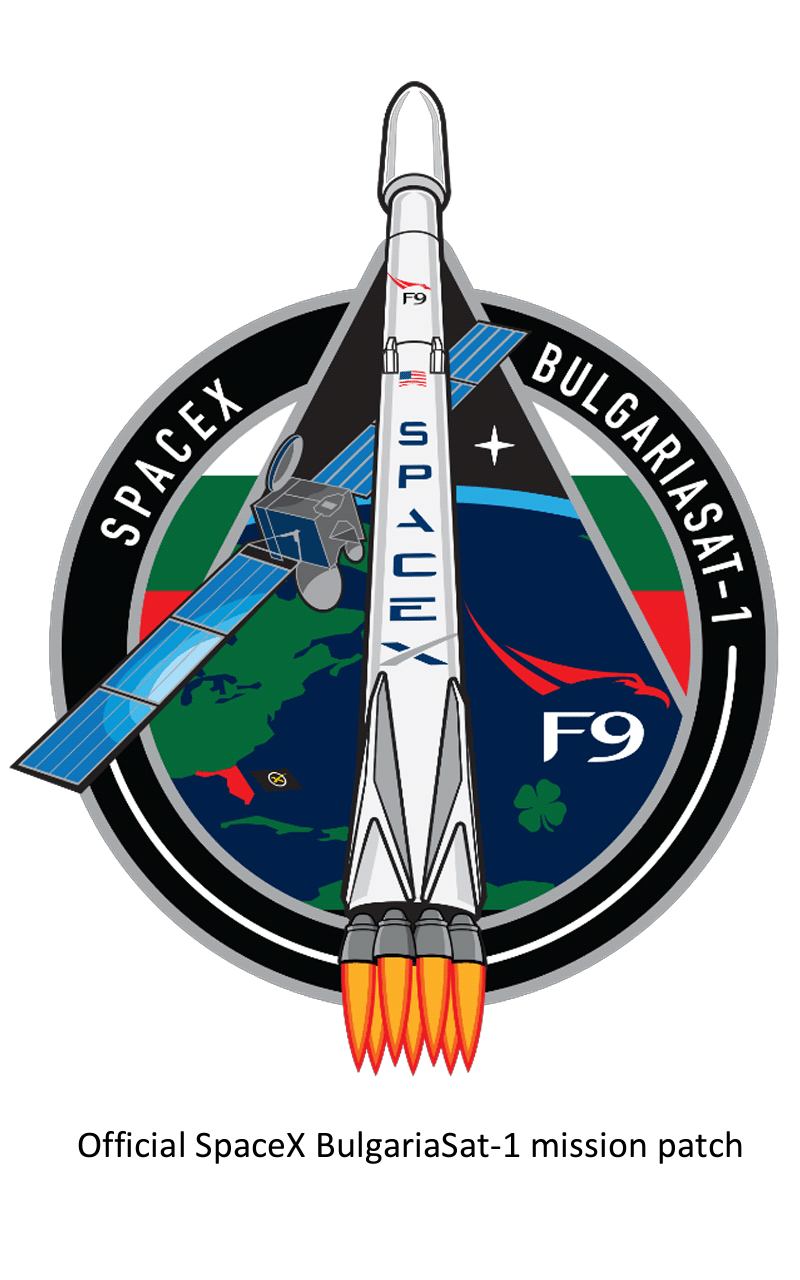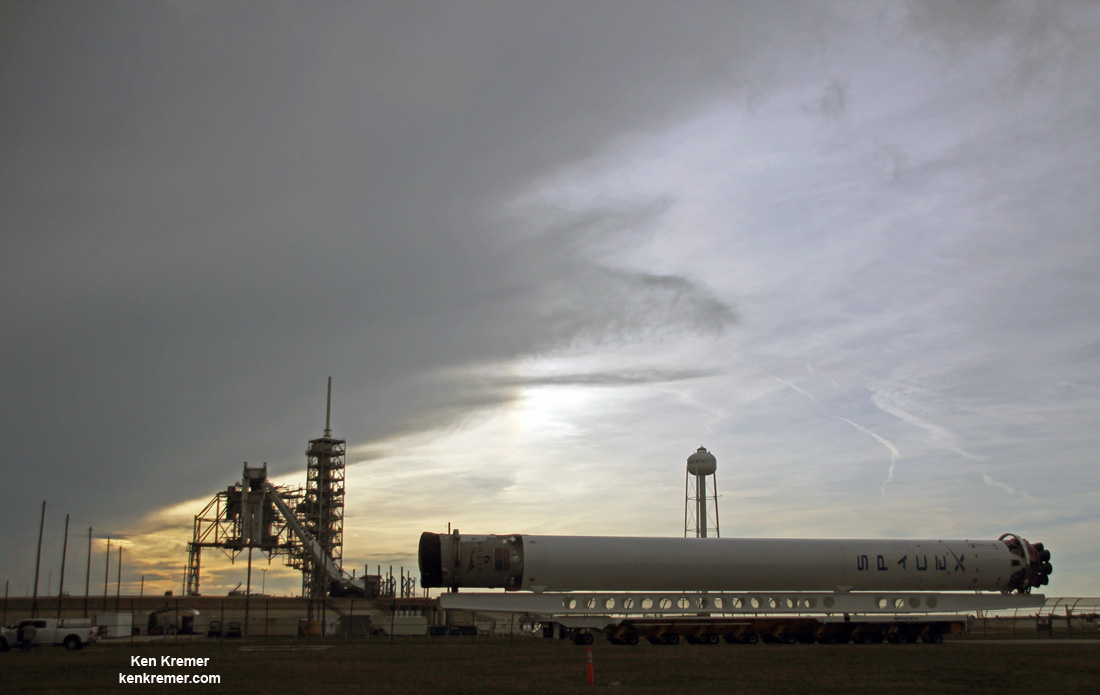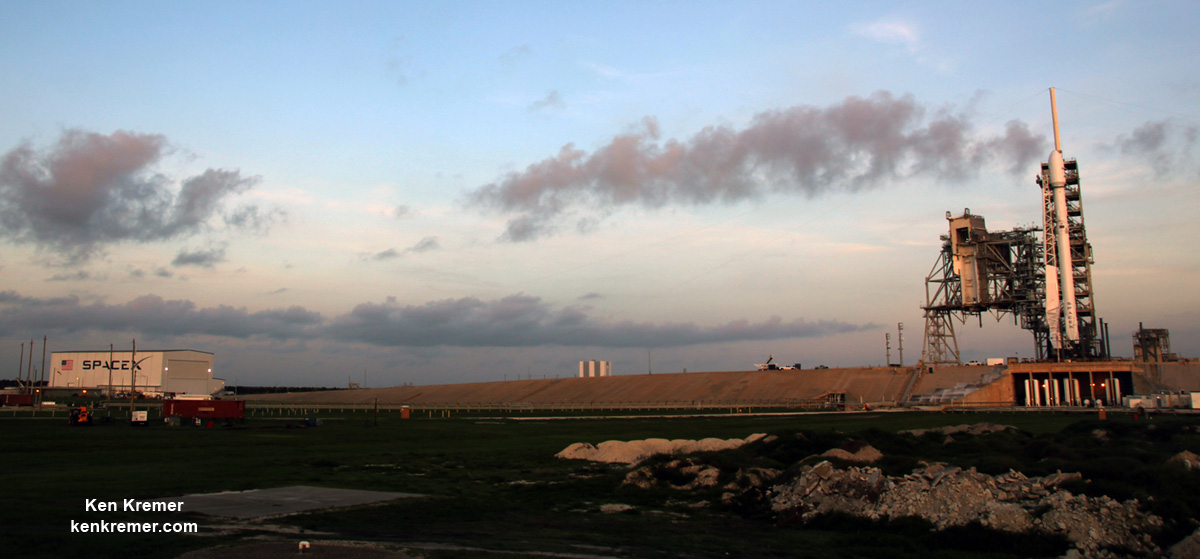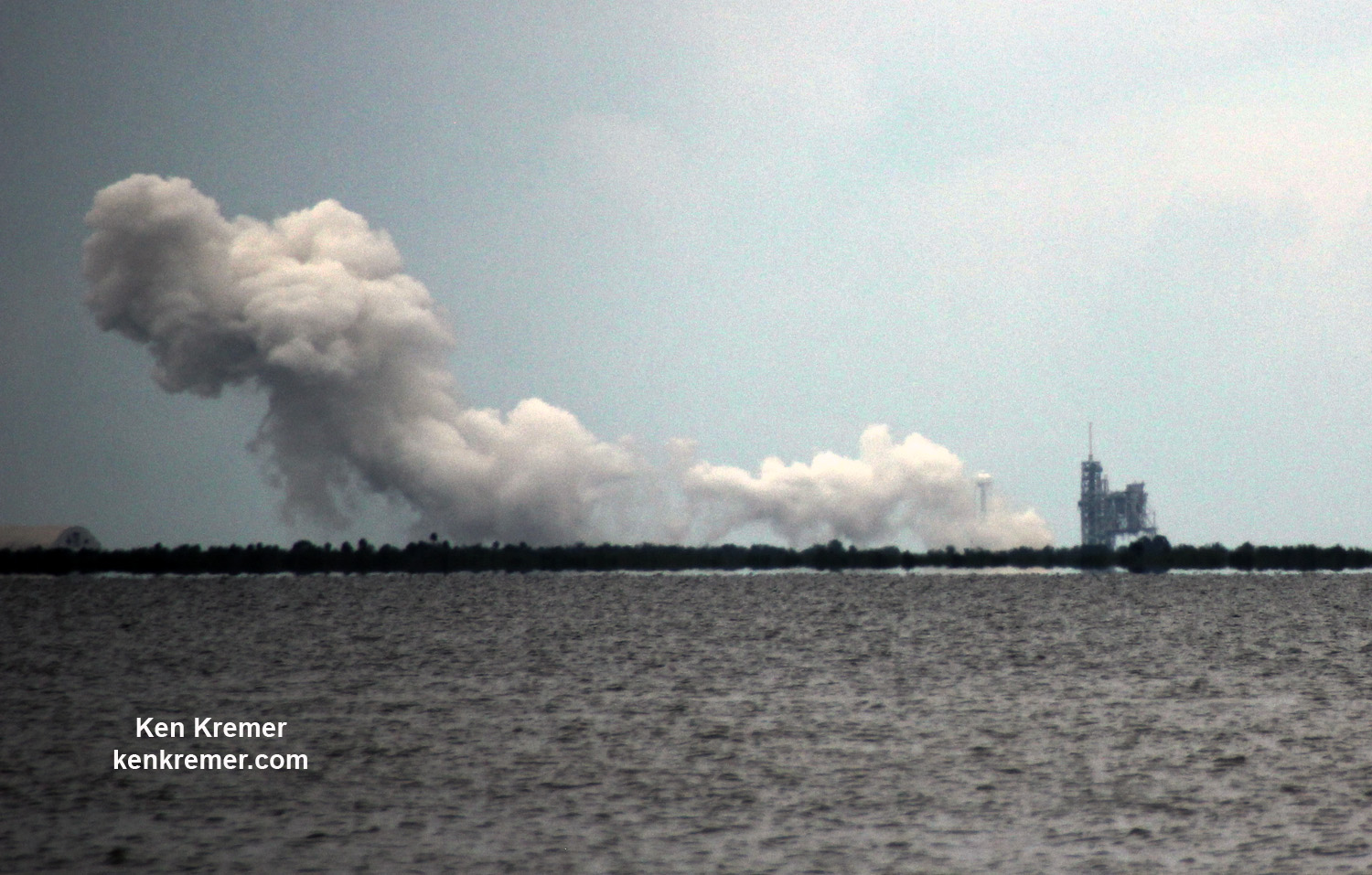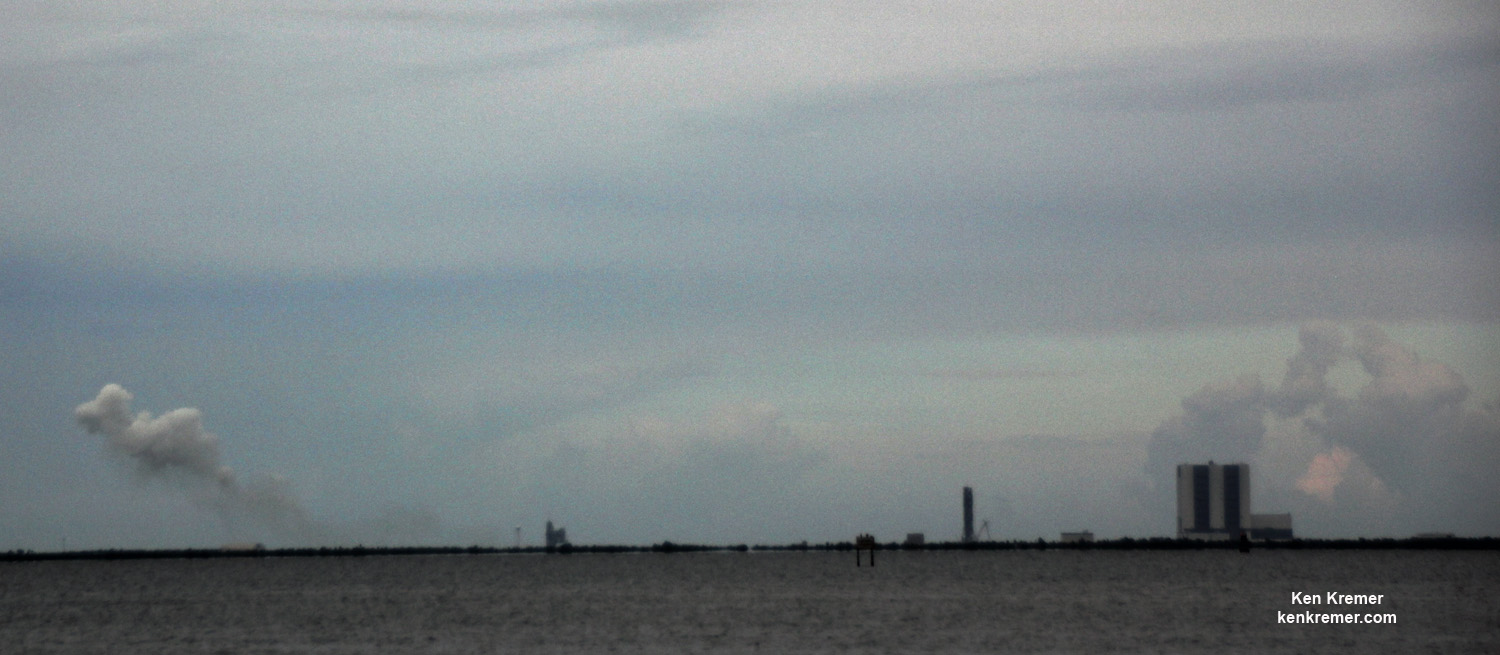
KENNEDY SPACE CENTER, FL – Following a two day orbital chase and ballet of carefully choreographed thruster firings, the SpaceX Dragon cargo capsule launched at lunchtime on Monday Aug. 14 with tons of science and supplies arrived in the vicinity of the International Space Station (ISS) this morning, Wednesday, Aug 16.
While Dragon maneuvered in ever so slowly guided by lasers, NASA astronaut Jack Fischer and ESA (European Space Agency) astronaut Paolo Nespoli carefully extended the stations robotic arm to reach out and grapple the gumdrop shaped capsule.
They deftly captured the Dragon CRS-12 resupply spacecraft slightly ahead of schedule at 6:52 a.m. EDT with the station’s 57.7-foot-long (17.6 meter-long) Canadian-built robotic arm while working at a robotics work station in the seven windowed domed Cupola module.
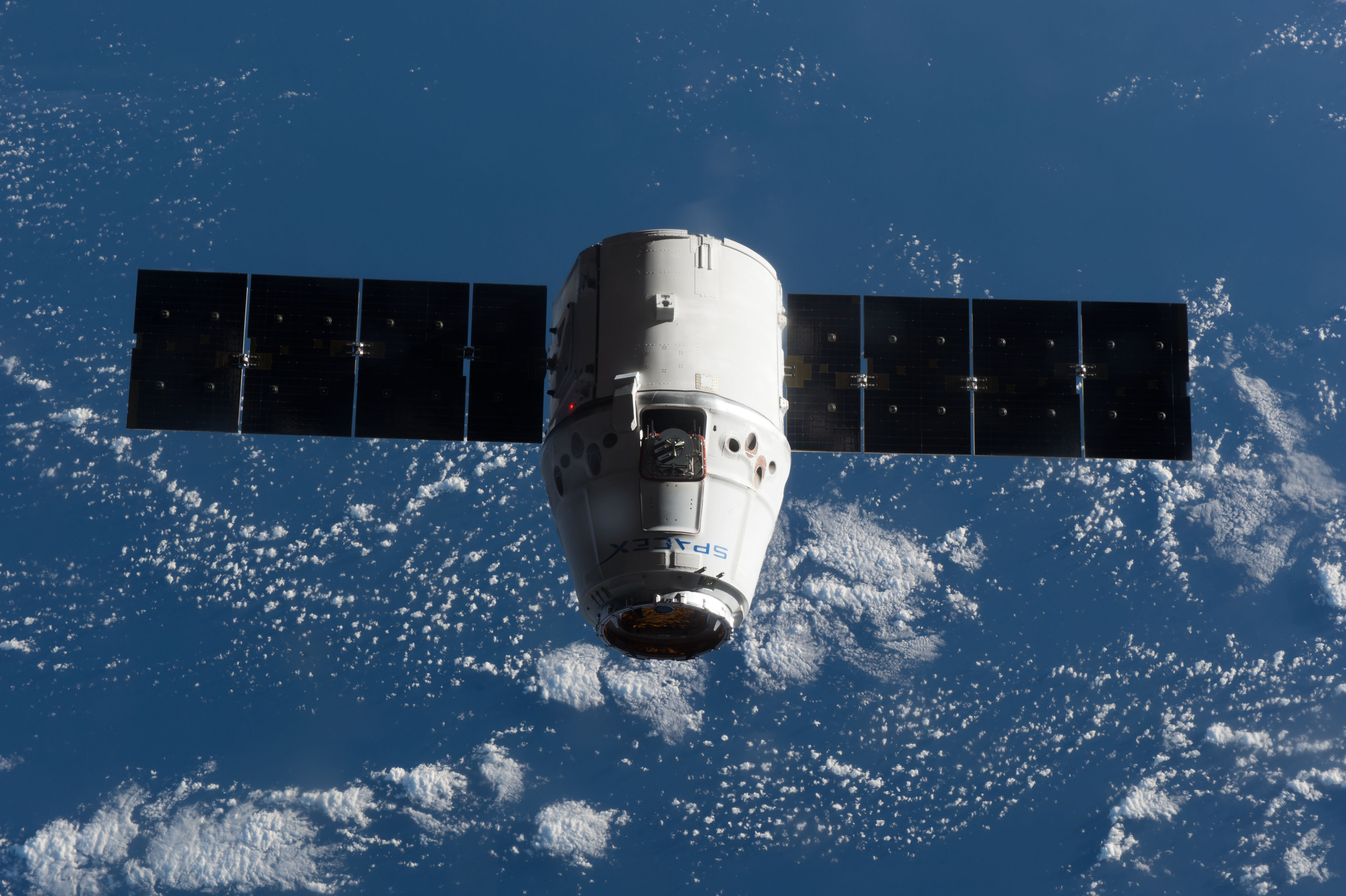
The million pound orbiting outpost was traveling over the Pacific Ocean north of New Zealand at the time of capture.
Liftoff of the SpaceX Falcon 9 took place precisely on time 2 days earlier with ignition of the 9 Merlin 1D first stage engines from seaside pad 39A at NASA’s Kennedy Space Center in Florida today (Aug. 14) at 12:31 p.m. EDT (1631 GMT).
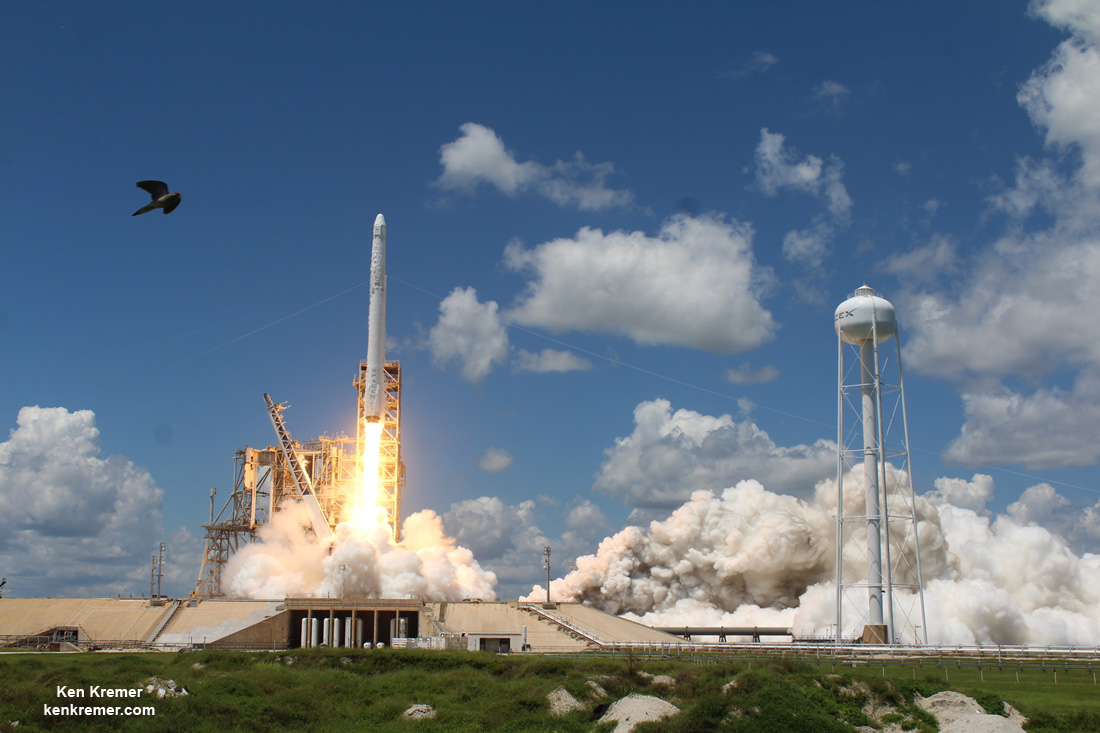
The two stage Falcon 9 stands 213-foot-tall (65-meter-tall). The combined output of the 9 Merlin 1D first stage engines generates 1.7 million pounds of liftoff thrust, fueled by liquid oxygen and RP-1 propellants.
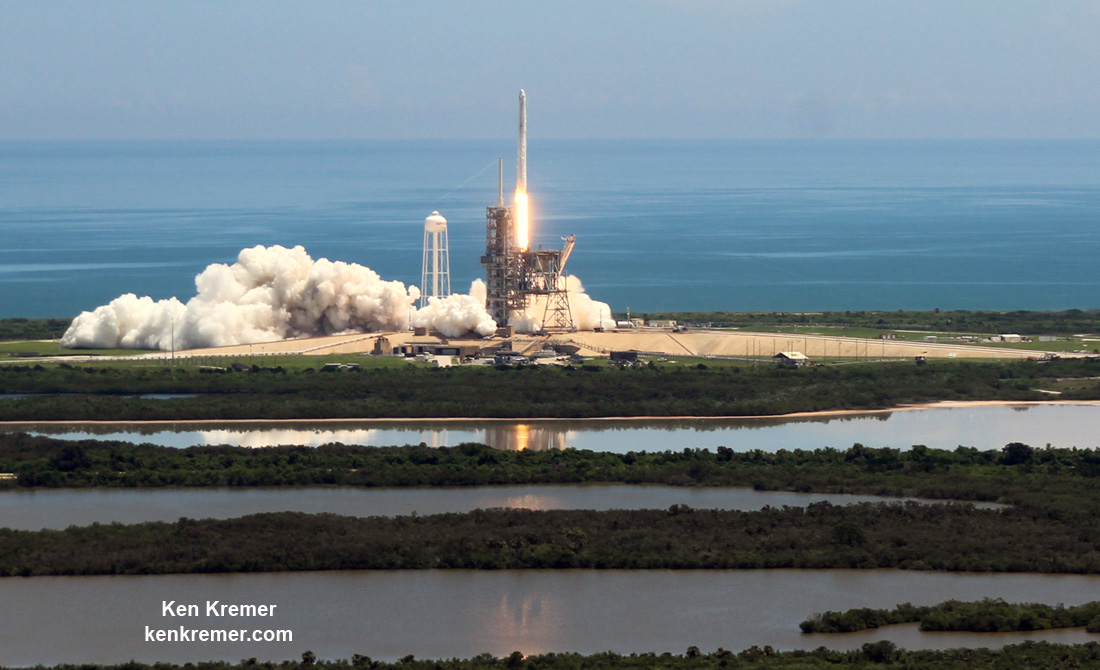
See an exciting gallery of launch imagery and videos including the thrilling ground landing of the 156 foot tall first stage booster back at Cape Canaveral at Landing Zone-1 – from this author and several space colleagues.
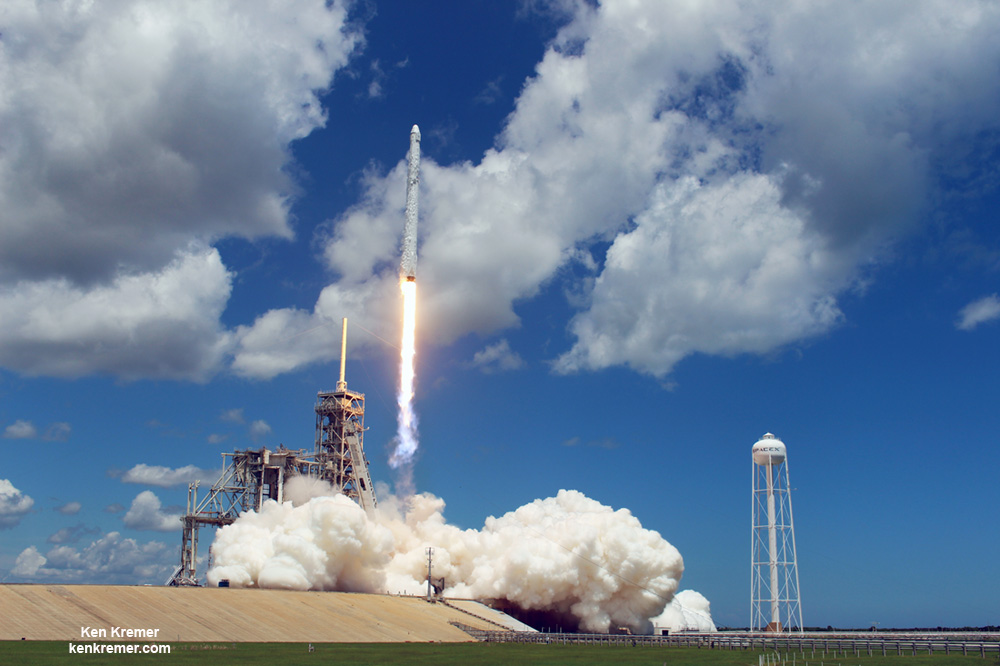
Monday’s picture perfect lunchtime liftoff of the unmanned SpaceX CRS-12 Dragon cargo freighter bound for the ISS and loaded with over 3 tons of science, research hardware and supplies including a hefty cosmic ray detector named ISS-CREAM, medical research experiments dealing with Parkinson’s disease, lung and heart tissue, vegetable seeds, dozens of mice and much more – came off without a hitch.
Ground controllers then carried out the remainder of the work to berth the SpaceX Dragon cargo spacecraft at the Earth facing port on the Harmony module of the International Space Station at 9:07 a.m. EDT.
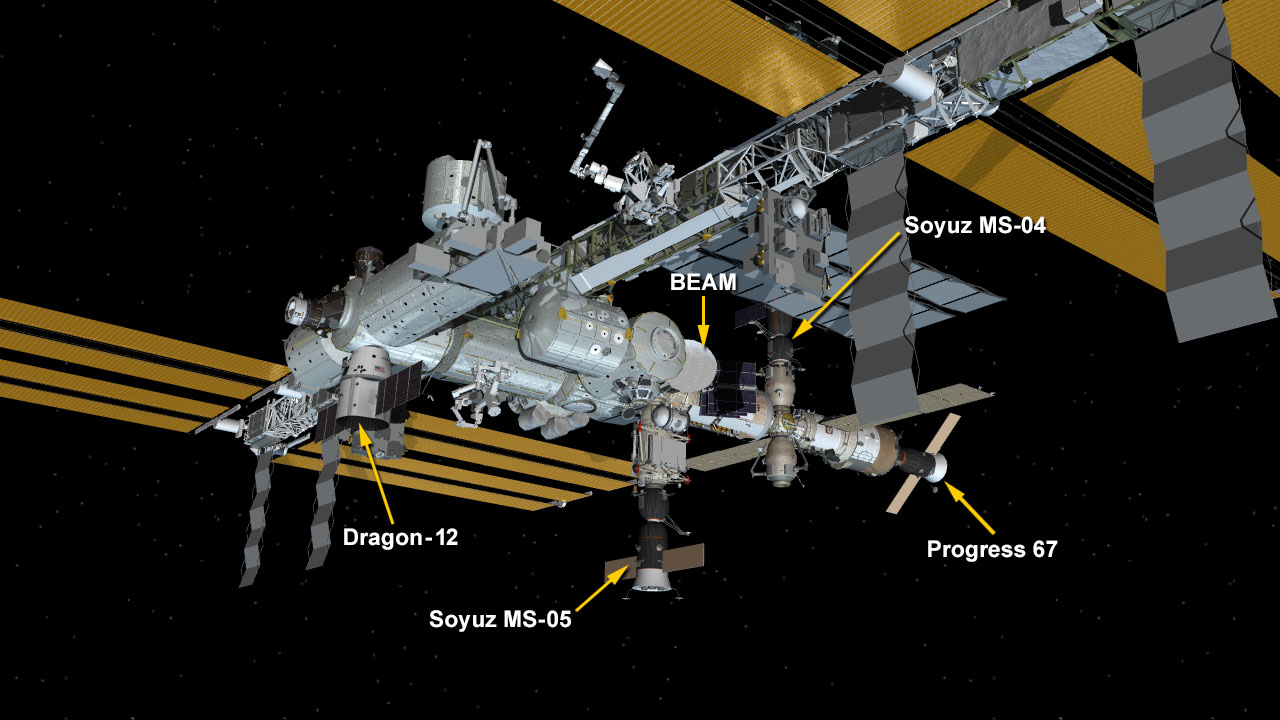
The crew was perhaps especially eager for this Dragons arrival because tucked inside the more than 3 tons of cargo was a stash of delicious ice cream treats.
“The small cups of chocolate, vanilla and birthday cake-flavored ice cream are arriving in freezers that will be reloaded with research samples for return to Earth when the Dragon spacecraft departs the station mid-September,” said NASA.
Indeed the crew did indeed open the hatches today, early than planned, a few hours after arrival and completion of the requisite safety and leak checks.
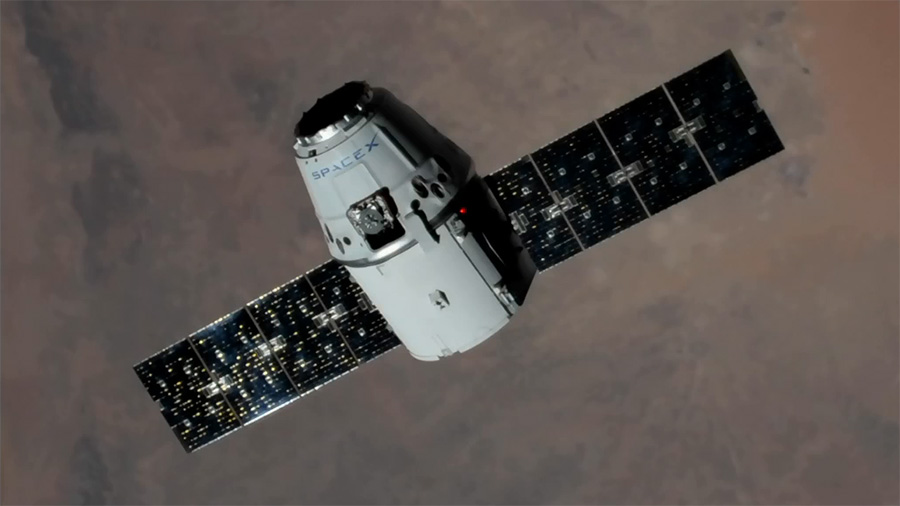
The whole sequence was broadcast on NASA TV that began live arrival coverage at 5:30 a.m showing numerous stunning video sequences of the rendezvous and grappling often backdropped by our precious Home Planet.
The current multinational Expedition 52 crew serving aboard the ISS comprises of Flight Engineers Paolo Nespoli from ESA, Jack Fischer, Peggy Whitson and Randy Bresnik of NASA and Sergey Ryazanskiy and Commander Fyodor Yurchikhin of Roscosmos.

The Dragon resupply ship dubbed Dragon CRS-12 counts as SpaceX’s twelfth contracted commercial resupply services (CRS) mission to the International Space Station for NASA since 2012.
SpaceX holds a NASA commercial resupply services (CRS) contract that includes up to 20 missions under the original CRS-1 contract.
The 20-foot high, 12-foot-diameter Dragon CRS-12 vessel is carrying more than 6,400 pounds ( 2,900 kg) of science experiments and research instruments, crew supplies, food water, clothing, hardware, gear and spare parts to the million pound orbiting laboratory complex. 20 mice are also onboard. This will support dozens of the 250 research investigations and experiments being conducted by Expedition 52 and 53 crew members.
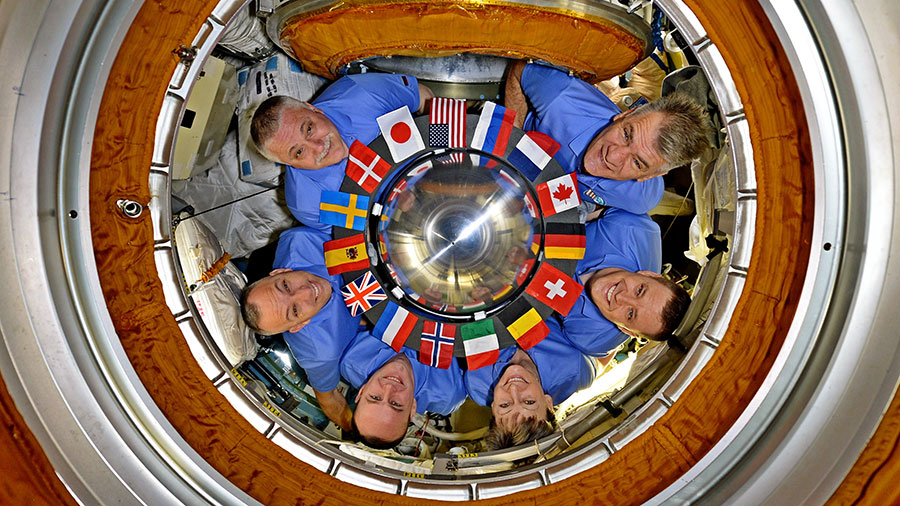
Video Caption: CRS-12 launch from Pad 39A on a Falcon 9 rocket. Pad camera views from the launch of the CRS-12 mission carrying 6415 pounds of supplies and equipment to the International Space Station on August 14, 2017. Credit: Jeff Seibert
The SpaceX Falcon 9/Dragon CRS-12 launch was the first of a rapid fire sequence of a triad of launches along the Florida Space Coast over the next 11 days of manmade wonder – Plus a Total Solar ‘Eclipse Across America’ natural wonder sandwiched in between !!
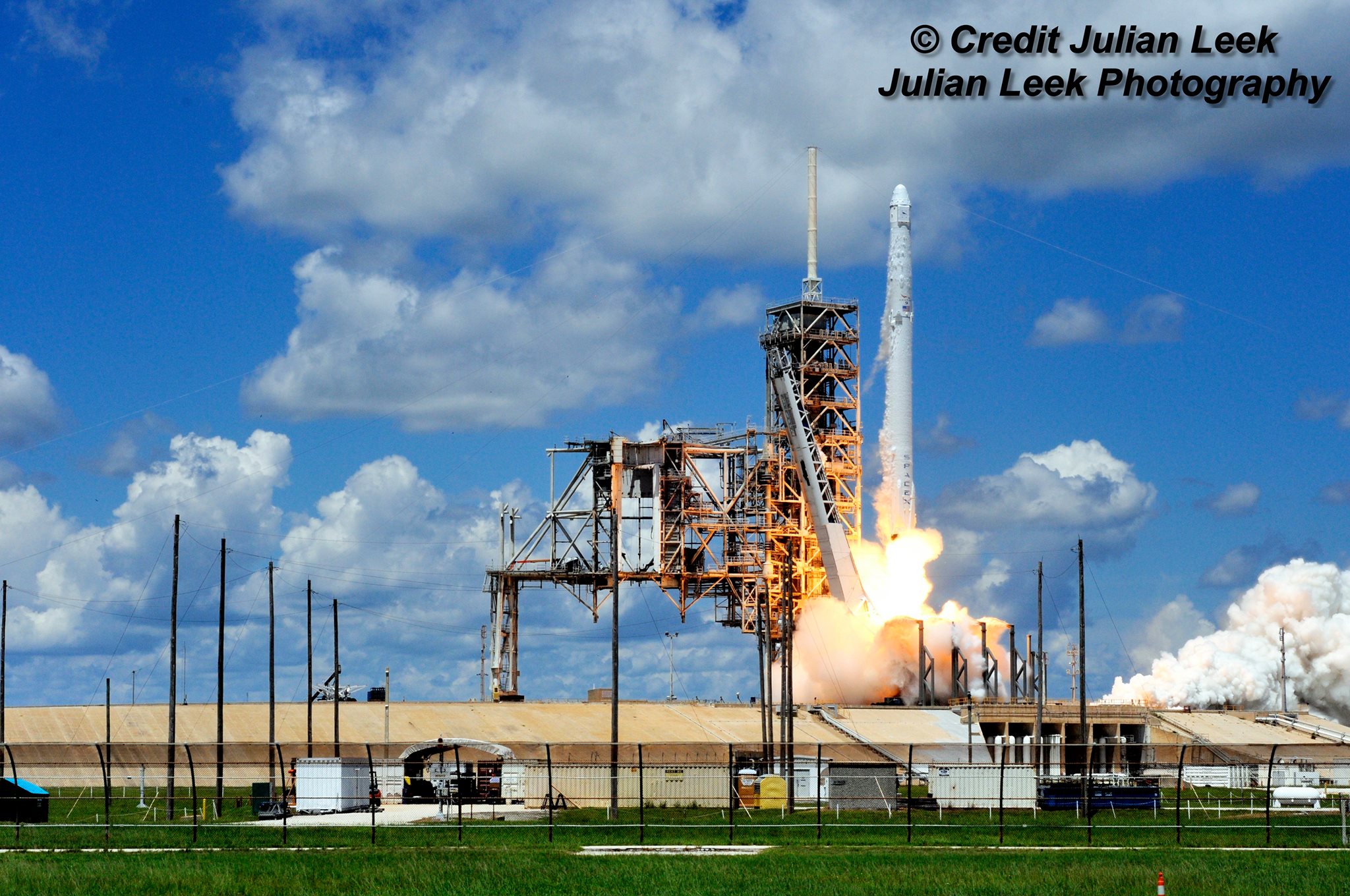
Watch for Ken’s continuing onsite CRS-12, TRDS-M, and ORS 5 and NASA mission reports direct from the Kennedy Space Center and Cape Canaveral Air Force Station, Florida.
Stay tuned here for Ken’s continuing Earth and Planetary science and human spaceflight news.
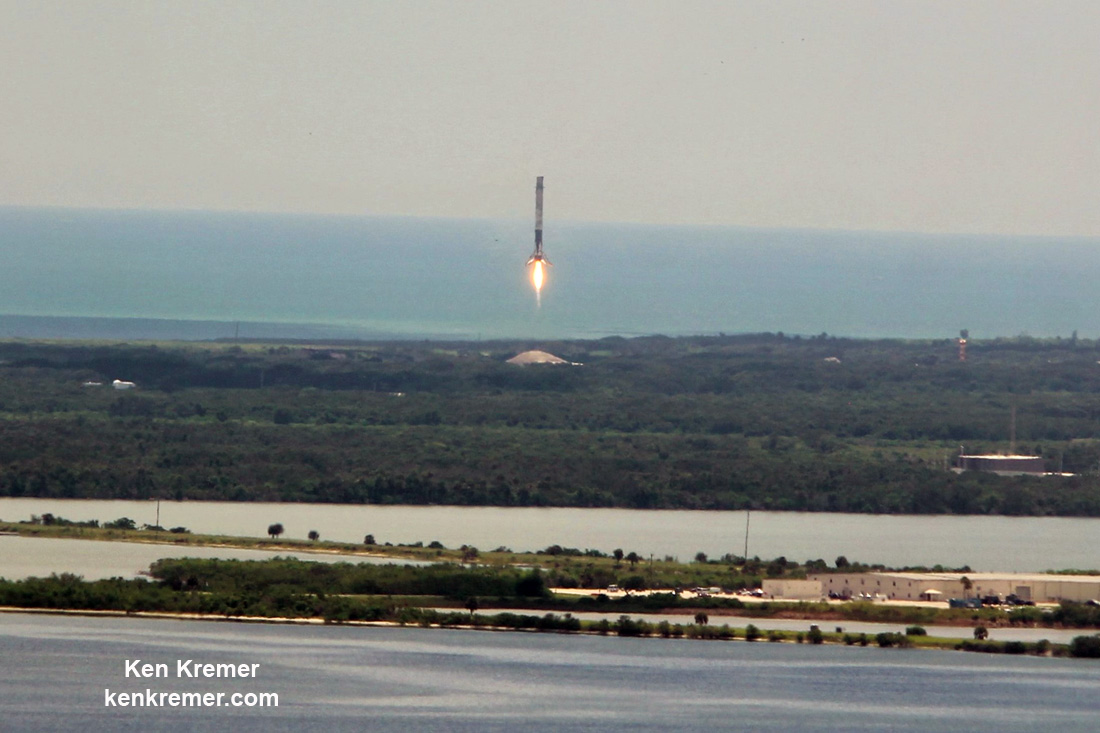
………….
Learn more about the upcoming ULA Atlas TDRS-M NASA comsat on Aug. 18, 2017 , SpaceX Dragon CRS-12 resupply launch to ISS on Aug. 14, Solar Eclipse, NASA missions and more at Ken’s upcoming outreach events at Kennedy Space Center Quality Inn, Titusville, FL:
Aug 17-18: “TDRS-M NASA comsat, SpaceX CRS-12 resupply launches to the ISS, Intelsat35e, BulgariaSat 1 and NRO Spysat, SLS, Orion, Commercial crew capsules from Boeing and SpaceX , Heroes and Legends at KSCVC, ULA Atlas/John Glenn Cygnus launch to ISS, SBIRS GEO 3 launch, GOES-R weather satellite launch, OSIRIS-Rex, Juno at Jupiter, InSight Mars lander, SpaceX and Orbital ATK cargo missions to the ISS, ULA Delta 4 Heavy spy satellite, Curiosity and Opportunity explore Mars, Pluto and more,” Kennedy Space Center Quality Inn, Titusville, FL, evenings
